Learn All About the Best Backpacking Backpack Features
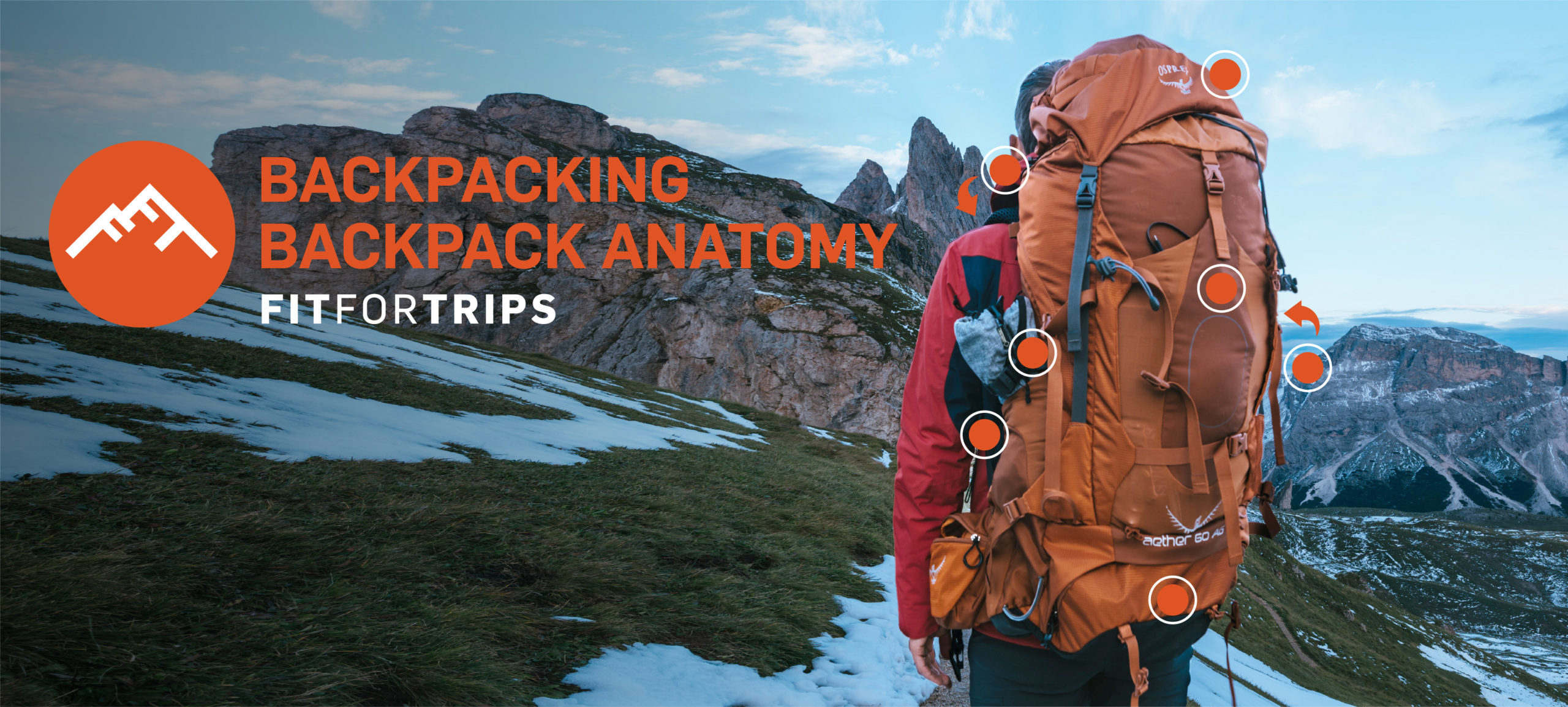
Check out another featured article in our Backpackers Pack series:
How to Simplify Choosing Your Very First Pack
HOW TO IMPROVE YOUR BACKPACKING BACKPACK IQ
- Read the entire article
- Click any of the backpacks featured at the very bottom
- Test your knowledge to identify the backpacking backpack features
- Instantly raise your IQ for picking packs
Recommendation on how to read this article: I am confident that when you finish reading this article you will be an expert on identifying all the backpacking pack parts. What features are most important to you? Which features are critical and which could you do without? More features mean more weight, more things to break, and more headaches. We’ll discuss all these aspects so you can make an informed decision on the right pack for you.
Backpacking Backpack Features Top to Bottom | Inside and Out
- Top
- Front Panel
- Side Panels
- Back Panel
- Shoulder Straps
- Hip Belt
Our focus will be on packs meant to carry a load, such as an overnight trip or a winter day trip with appropriate bulky gear. In general, a load is 15 pounds or more; that encompasses packs of 30 liters or more with some type of frame support and packs with a hip belt designed to transfer a good part of the load to your hips (versus your shoulders carrying the load – ouch!).
Most high quality backpacks come in a number of sizes to fit most body types and are offered in men’s and women’s versions. The difference between the two is that women’s packs will have shoulder straps a bit closer together for narrower shoulders, a shorter length to better fit shorter women’s torso, and “S” shaped shoulder straps to better fit the curves of a female.
When you start fitting for a new backpack, don’t let yourself get hung up on the manufacturer’s gender label. Women with wider shoulders often get a better fit with a men’s pack. Teenage boys with narrow shoulders and hips may fit better in a women’s model. Of course, I do realize that the colors offered may or may not fit your color preferences!
Fundamentally, a backpack is a bag with shoulder straps.
A fairly simple design. As materials and design progressed, packs with frames were developed to carry heavier loads. Pockets were added, as were lash loops and tie-on points. Various closure systems were developed. Zippers added to the mix. With modern materials and design, you can readily find a pack to carry 30 pounds (a common weight with 4 days of food) that weighs under 3 pounds! I recall when I backpacked the Rockies each summer in the 1990s, my week-long load was 50 pounds and the pack alone weighed 7 pounds. That’s progress!
Please note that this article focuses on modern, traditional style backpacks for those new to backpacking – not ultralight packs for ultralight loads common to more experienced backpackers.
Backpack features on 35-70 liter backpacks are generally the same.
Before we get into the details of various features, take some time to determine the pack volume size you will need. In other words, know what gear you are going to carry on the majority of your trips. For instance, food is both bulky and heavy, but you’ll eat about 2 pounds of food per day. Cold weather gear is bulky and winter backpacking generally requires extra gear (snow shoes, snow shovel, etc.).
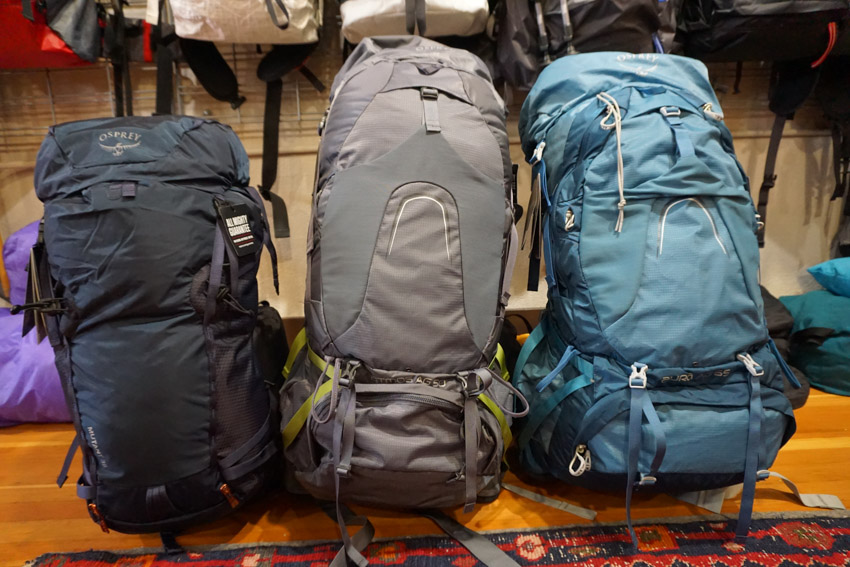 Backpack liter size comparison: MUTANT 38 L /Osprey ATMOS AG 50 L / Osprey AURA AG 65 L
Backpack liter size comparison: MUTANT 38 L /Osprey ATMOS AG 50 L / Osprey AURA AG 65 L
In general, a summer weekend backpacking kit will fit a 35-50 liter pack. A week long summer trip is best handled with a 55-65 liter pack. Winter backpacking in the snow states may need a 75 liter pack.
Outside of volume the features of a pack (the bells and whistles) don’t vary much. The majority of backpacks are top loading, just like a grocery sack. Side zippers may aid in access to items deep in the pack. Many traditional backpacks still have a zippered compartment on the bottom intended for sleeping bags, wet clothing, etc.
Let’s look at the important parts and features of backpacking backpacks and how to use them.
*BACKPACK TOP SIDE*
To give some structure to the pack features, let’s start at the top of the pack. The pack body has a top closure with a cover of some type. Traditional packs have a drawstring bag closure, covered by a lid, typically with a zippered compartment or two.
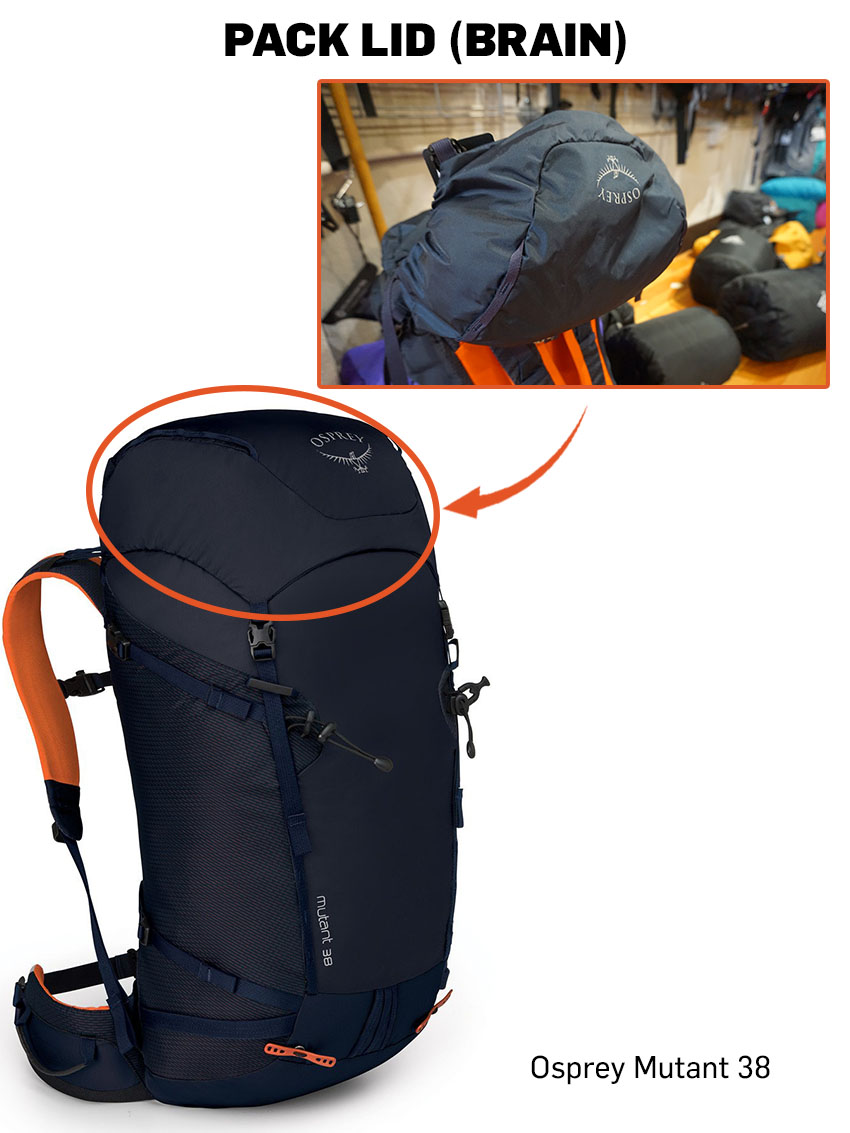 Searching for a backpacking backpack with a top flap? It’s called a lid or “brain.”
Searching for a backpacking backpack with a top flap? It’s called a lid or “brain.”
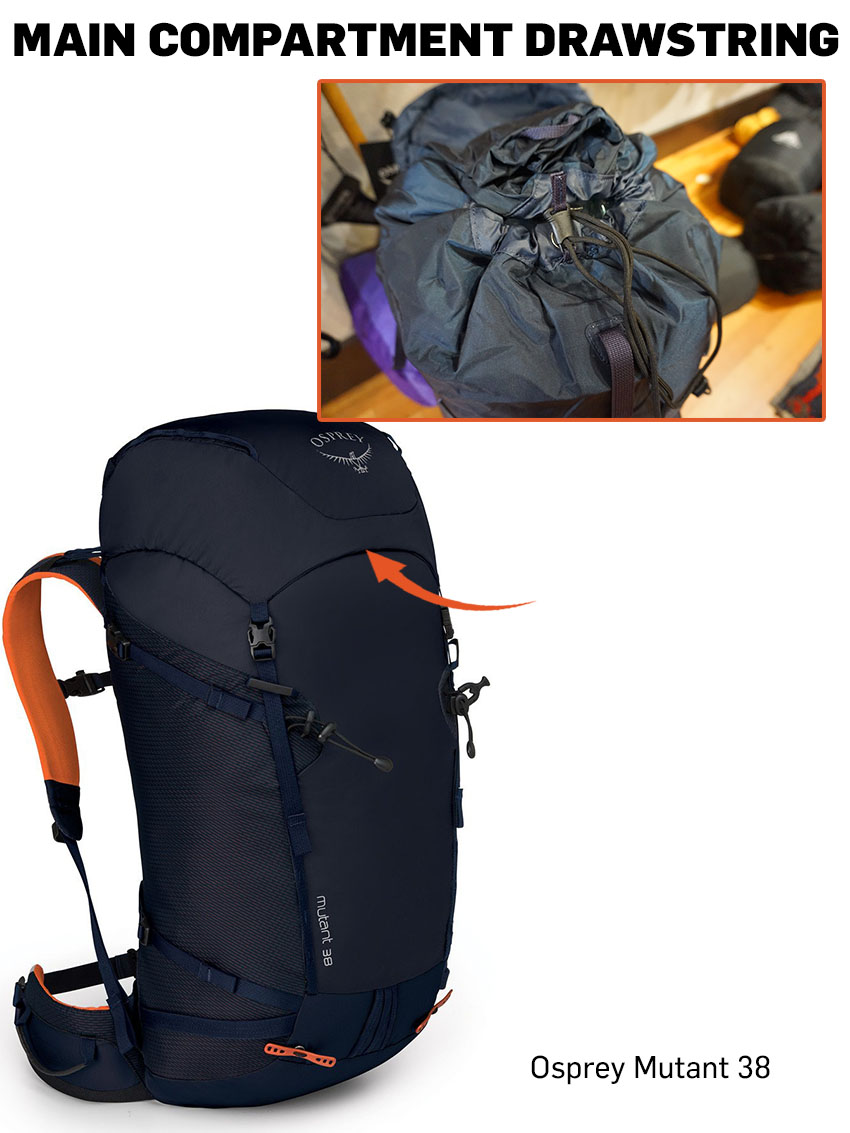 Under the lid or brain you will find the main compartment drawstring.
Under the lid or brain you will find the main compartment drawstring.
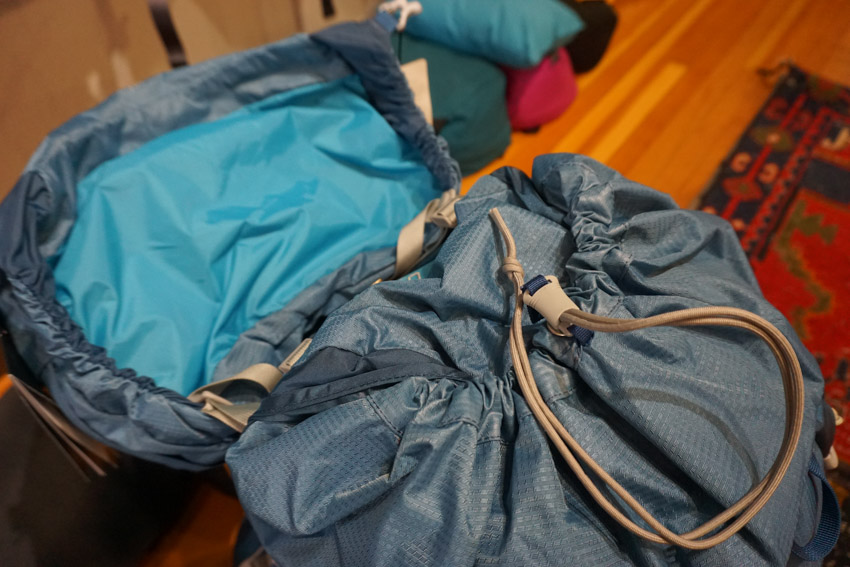 Main compartment drawstring under pack lid on the Osprey AURA AG 65 backpack.
Main compartment drawstring under pack lid on the Osprey AURA AG 65 backpack.
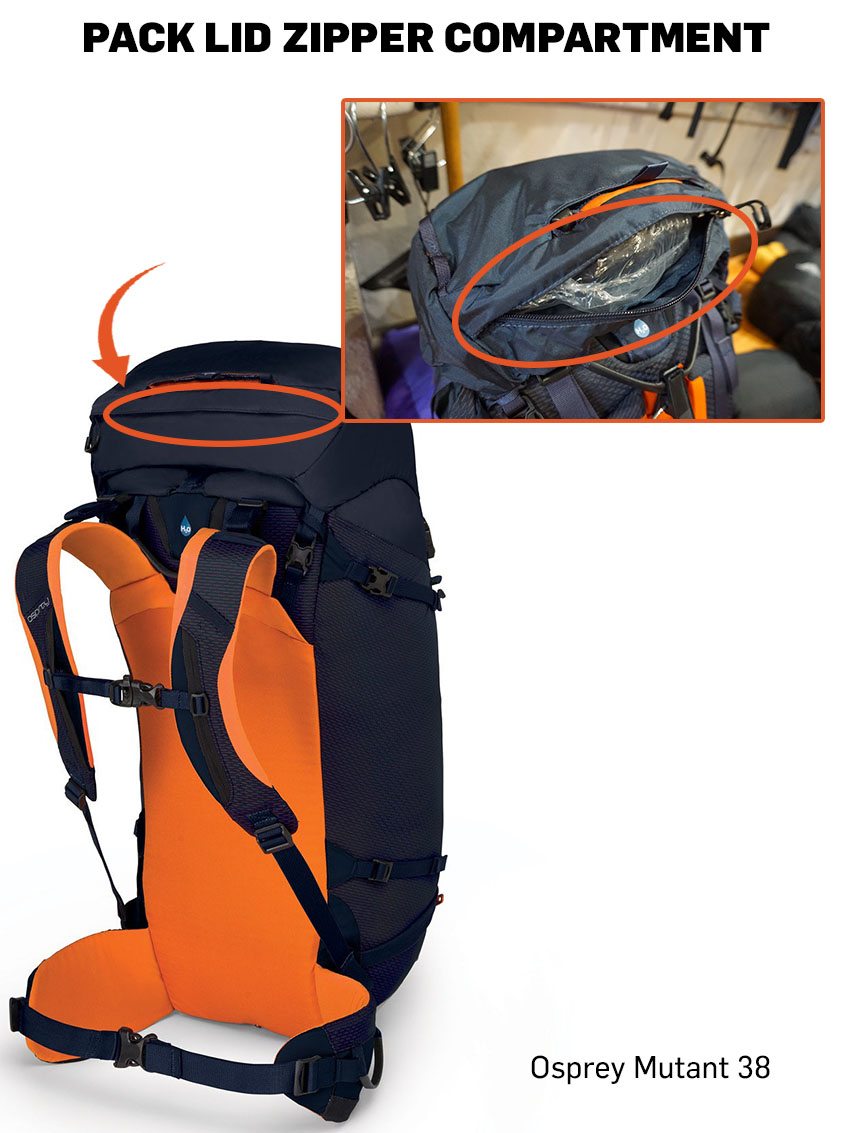 Pack lid zipper compartment on the Osprey Mutant 38 L backpacking backpack.
Pack lid zipper compartment on the Osprey Mutant 38 L backpacking backpack.
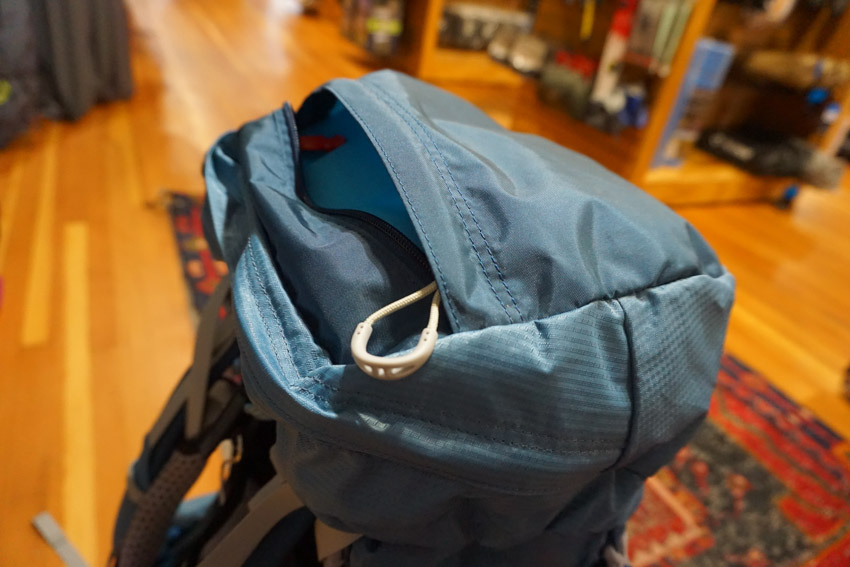 Pack lid “brain” zipper compartment on the Osprey Aura AG 65 liter backpacking backpack.
Pack lid “brain” zipper compartment on the Osprey Aura AG 65 liter backpacking backpack.
The lid (erroneously referred to as a “brain” by some – brains have intelligence, lids don’t) may be attached to the pack with adjustable length straps (referred to as a “floating lid”) that allows for height adjustment to fit the load, and to be removed for use as a day bag. The lid opens and closes via buckle closures on straps. Some smaller volume packs have non-adjustable sewn-on lids. Many ultralight packs use a roll top, dry bag style close, making it easy to reduce pack volume as your food is consumed.
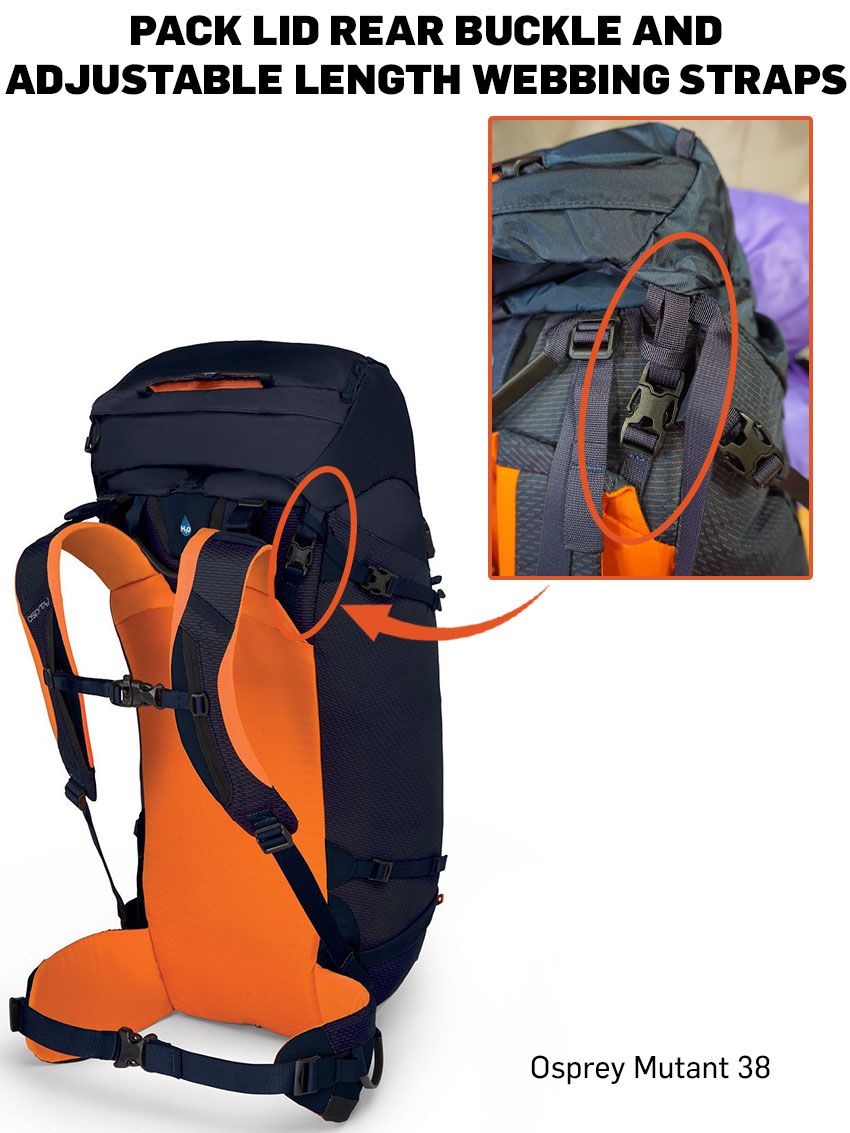 Release buckle-closures to open lid. Close buckle and cinch down webbing straps to compress lid over main compartment.
Release buckle-closures to open lid. Close buckle and cinch down webbing straps to compress lid over main compartment.
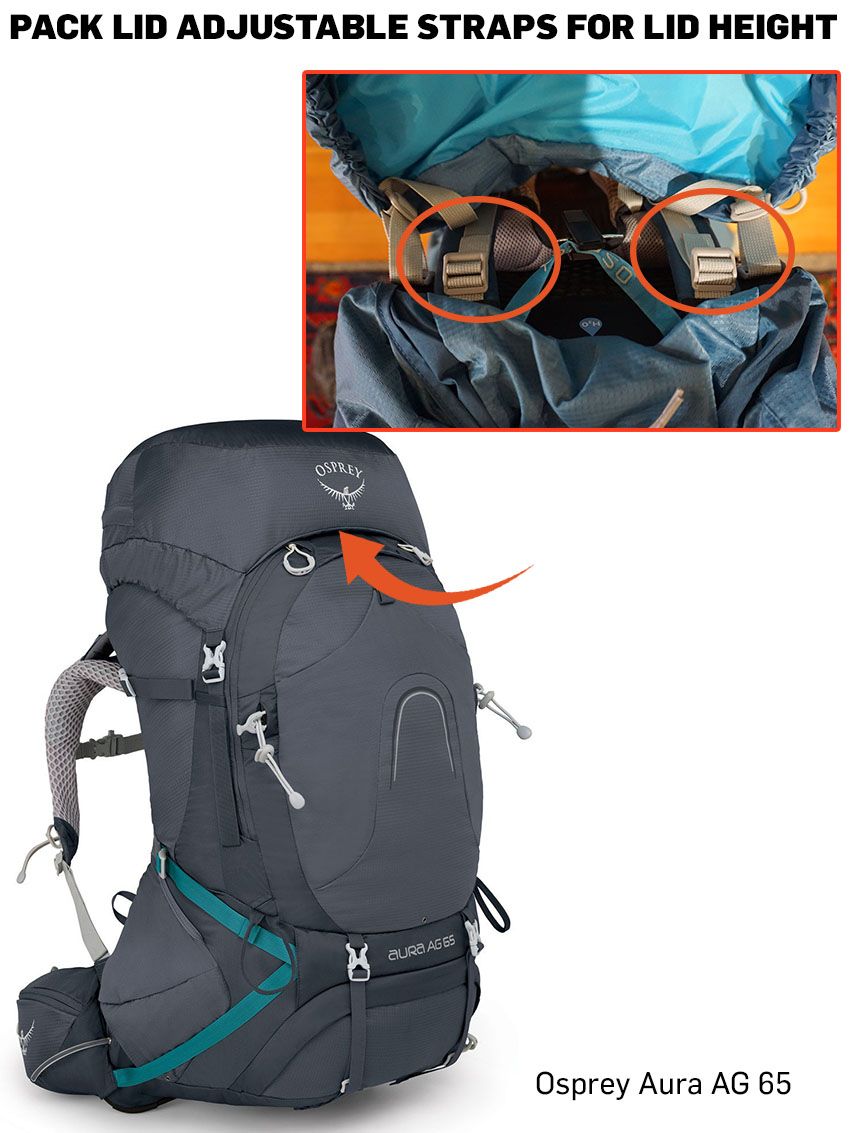 “Floating brain” can elevate to allow the top compartment contents to exceed pack volume.
“Floating brain” can elevate to allow the top compartment contents to exceed pack volume.
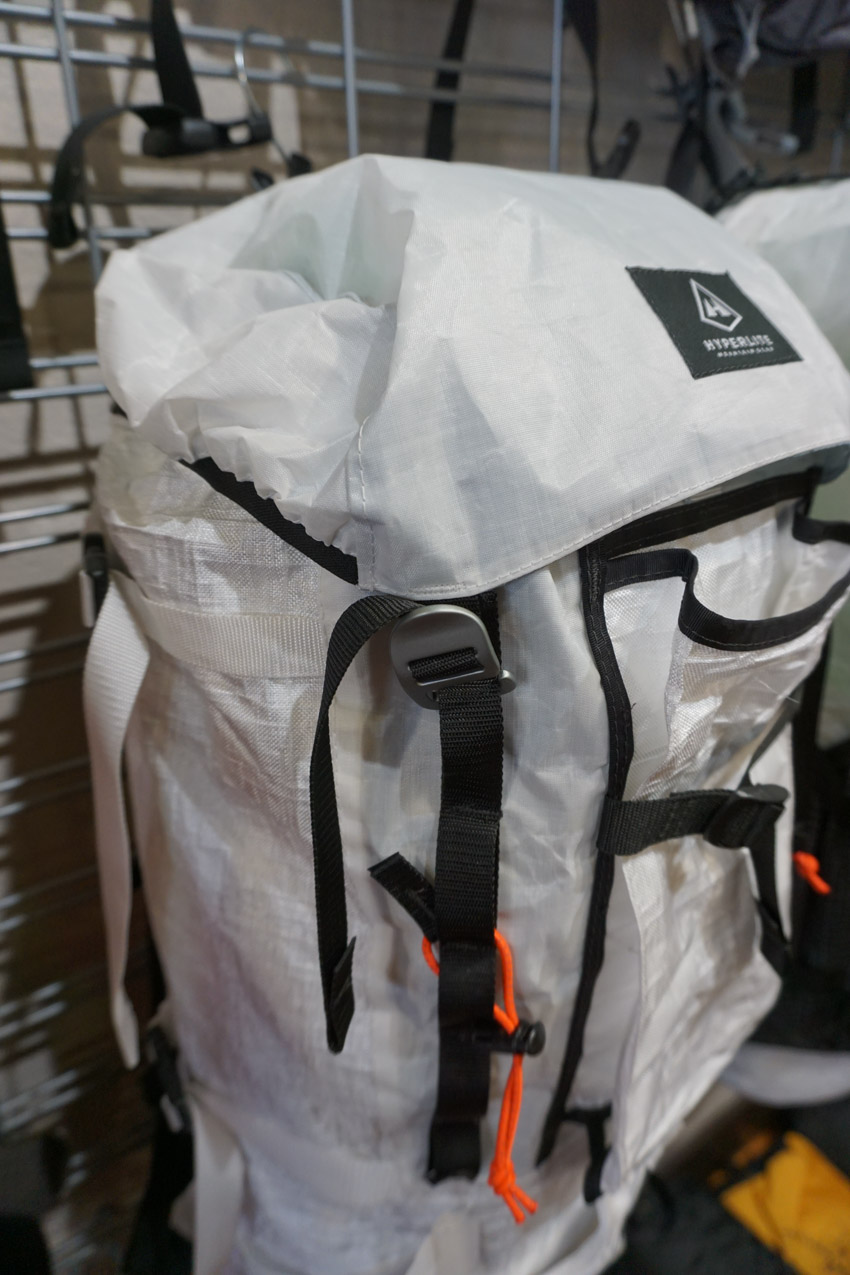 Hyperlite Prism Backpack lid has compression straps to secure gear stored underneath and bring the load closer to your center of gravity.
Hyperlite Prism Backpack lid has compression straps to secure gear stored underneath and bring the load closer to your center of gravity.
The zippered compartments on a lid are handy for storing items you want secured, such as knit hat, gloves, map, or backup battery. An underside zippered pocket is often used for secure items not needed during the hike such as keys, wallet, and passport. Some packs store the rain cover in this location. Some lids may have lashing points on top of the lid for stowing light yet bulky items, like a foam pad.
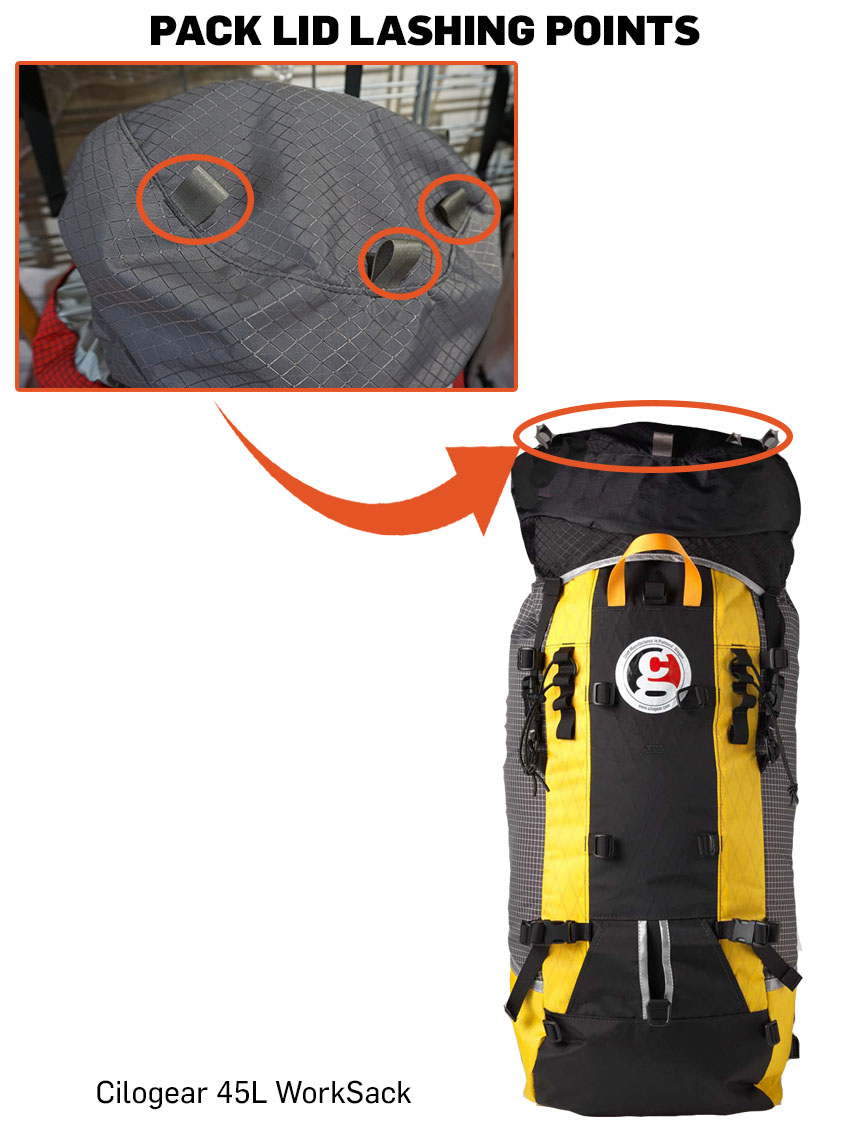 Attach straps and tie downs to lashing points on the lid and carry gear externally.
Attach straps and tie downs to lashing points on the lid and carry gear externally.
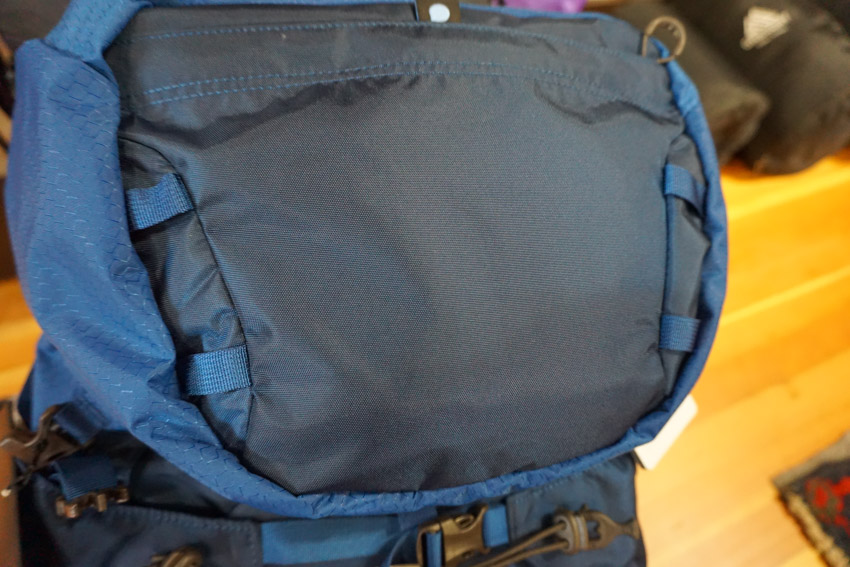 Pack lid lashing points on the Osprey Aether 65 liter Backpack to attach bulky-light gear.
Pack lid lashing points on the Osprey Aether 65 liter Backpack to attach bulky-light gear.
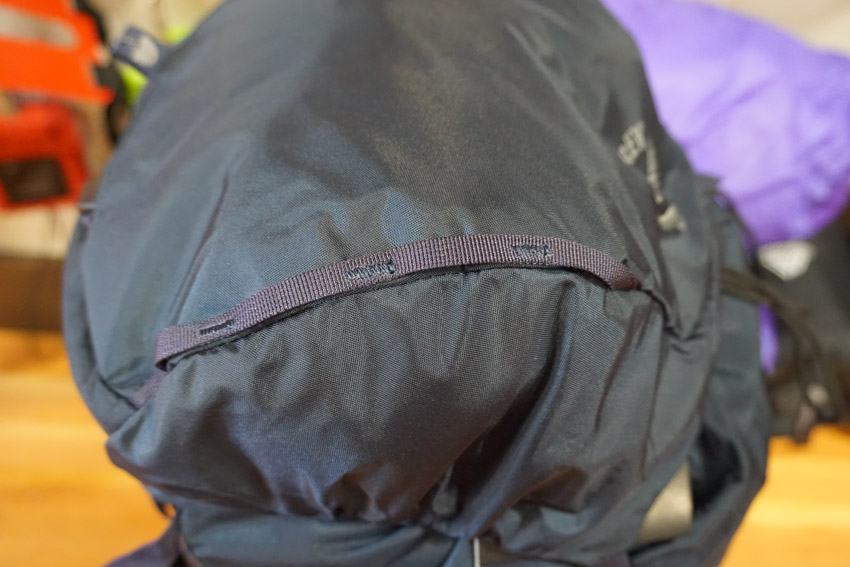 Daisy chain pack lid lashing points on the Osprey Mutant Backpacking Backpack.
Daisy chain pack lid lashing points on the Osprey Mutant Backpacking Backpack.
Inside the main compartment where most gear goes, most modern packs will have a sleeve with a hook or strap at the top for holding a water bladder – part of a hydration system.
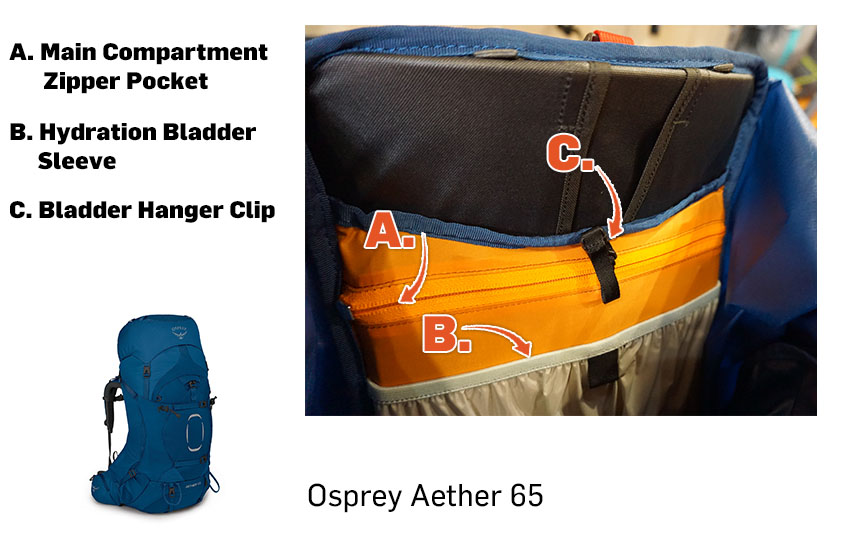 Internal hydration reservoir sleeve with hook to prevent bladder from sinking, which can cause restriction flow.
Internal hydration reservoir sleeve with hook to prevent bladder from sinking, which can cause restriction flow.
Bladders come in various sizes from 1.5 liters to 3 liters. Nearly all backpacks can fit a 3 liter bladder (but check that on XS frames!). The other part of a hydration system is the hose with mouth-piece. The hose is routed from the bladder through a small opening at the top of the pack, then threads down to a shoulder strap clip.
 Hydration-tube port exit, thread thru either side.
Hydration-tube port exit, thread thru either side.
Hydration systems are great for day hikes where you don’t need to refill it or shorter backpacking trips when you don’t need to refill during the day. Having to unload your backpack to access the bladder for a refill is not convenient. Slipping the filled bladder into the pack when loaded is rarely possible. This is why water bottles are the preferred hydration method for long distance backpackers.
In a bit of irony, the side of the backpack against your back is called the “back.” The other side of the pack facing to the rear is called the “front.” It is what it is!
*BACKPACK FRONT PANEL*
The majority of modern backpacks have a big pocket covering the front, typically made of stretchy mesh. It is a handy place to stow a rain jacket, water filter kit, potty kit, camp shoes, or a wet rain fly. This is also a good place for your food-for-the-day bag (so you don’t have to dig into the pack for lunch). It is amazing how much many of these stretchy pockets can hold! Older pack designs may have a fixed, vertical zippered pocket in this location.
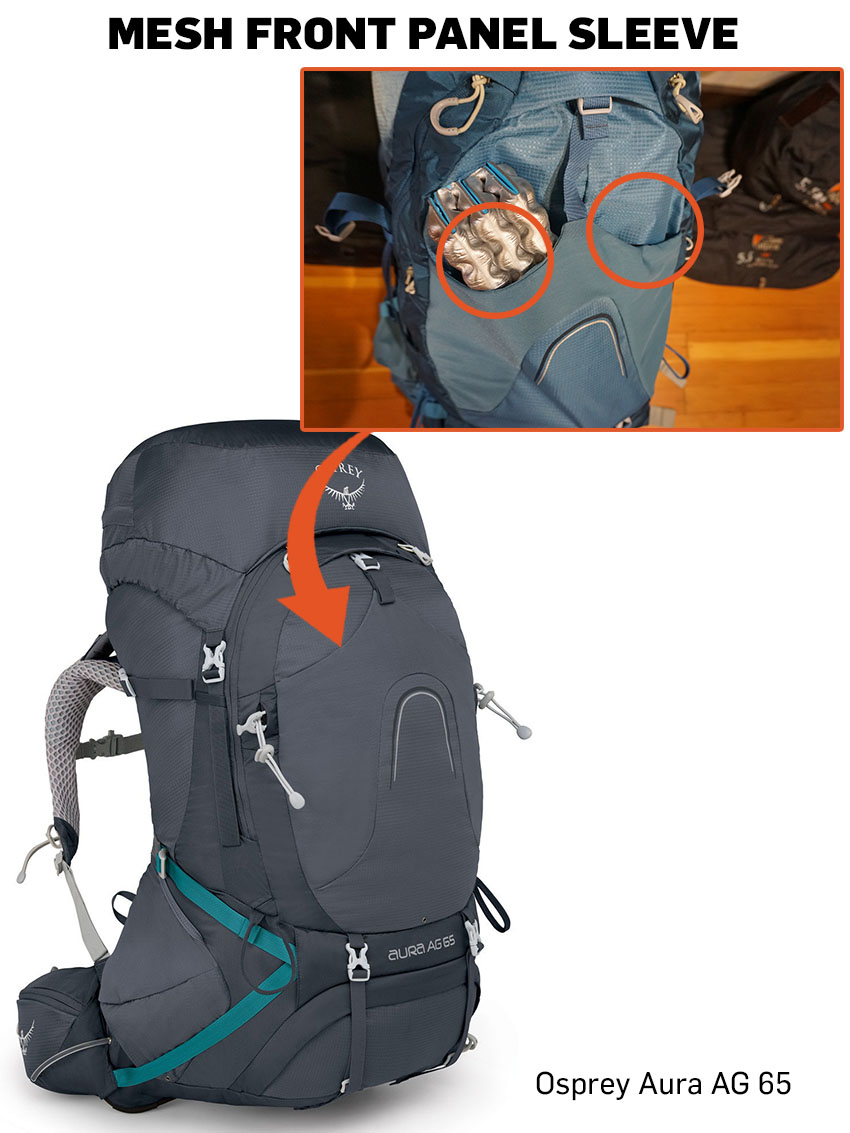 Front mesh panel pocket on the Osprey Aura AG 65 Backpacking Backpack.
Front mesh panel pocket on the Osprey Aura AG 65 Backpacking Backpack.
Just below the front pocket on many packs can be found a zippered compartment for quick access to a sleeping bag or as storage for wet clothes (most have a removable flap separating the lower compartment from the main compartment). On the same front-bottom location, lashing straps can often be found for strapping on a tent, sleeping pad, or camp chair.
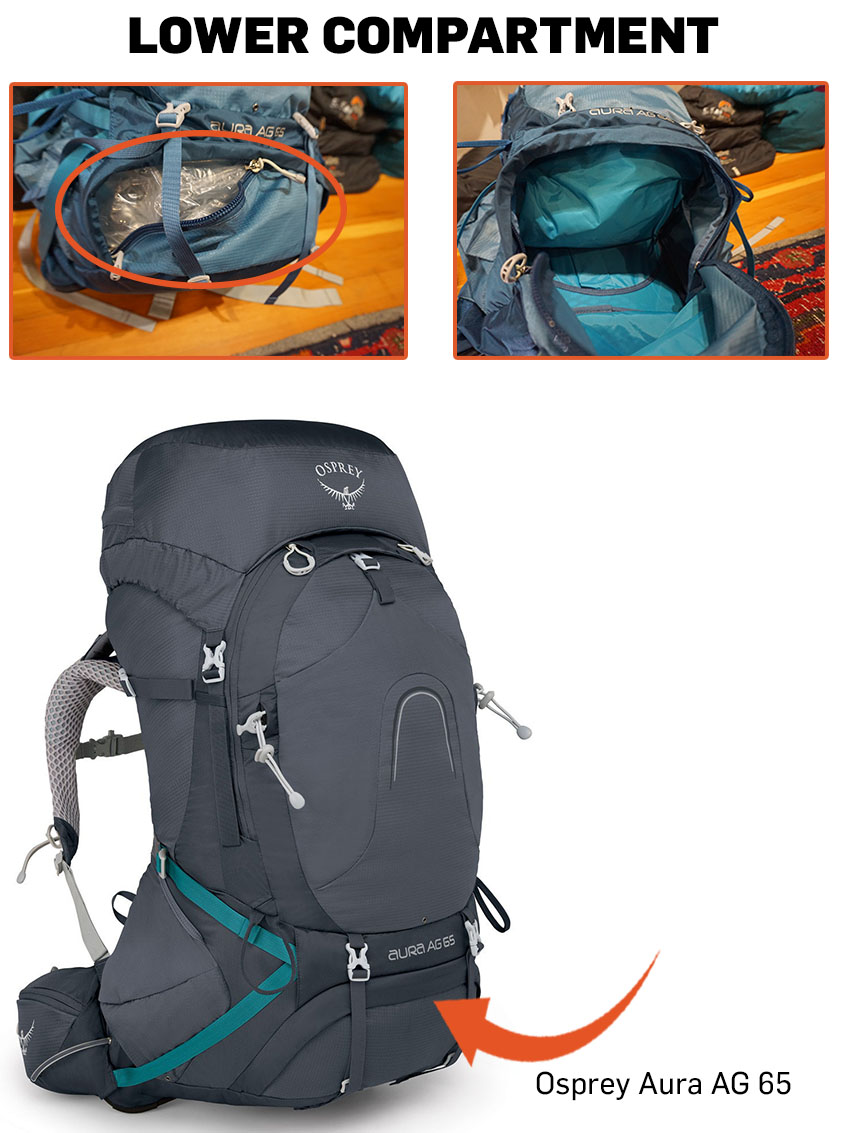 Osprey Backpack showing location of lower zippered compartment, sometimes called sleeping bag compartment.
Osprey Backpack showing location of lower zippered compartment, sometimes called sleeping bag compartment.
Some pack bodies will have a vertical zipper along the side of the front panel for quick access to items stored in the middle of the pack. While having such access is handy, be aware that zippers in high stress areas of the pack are more subject to damage.
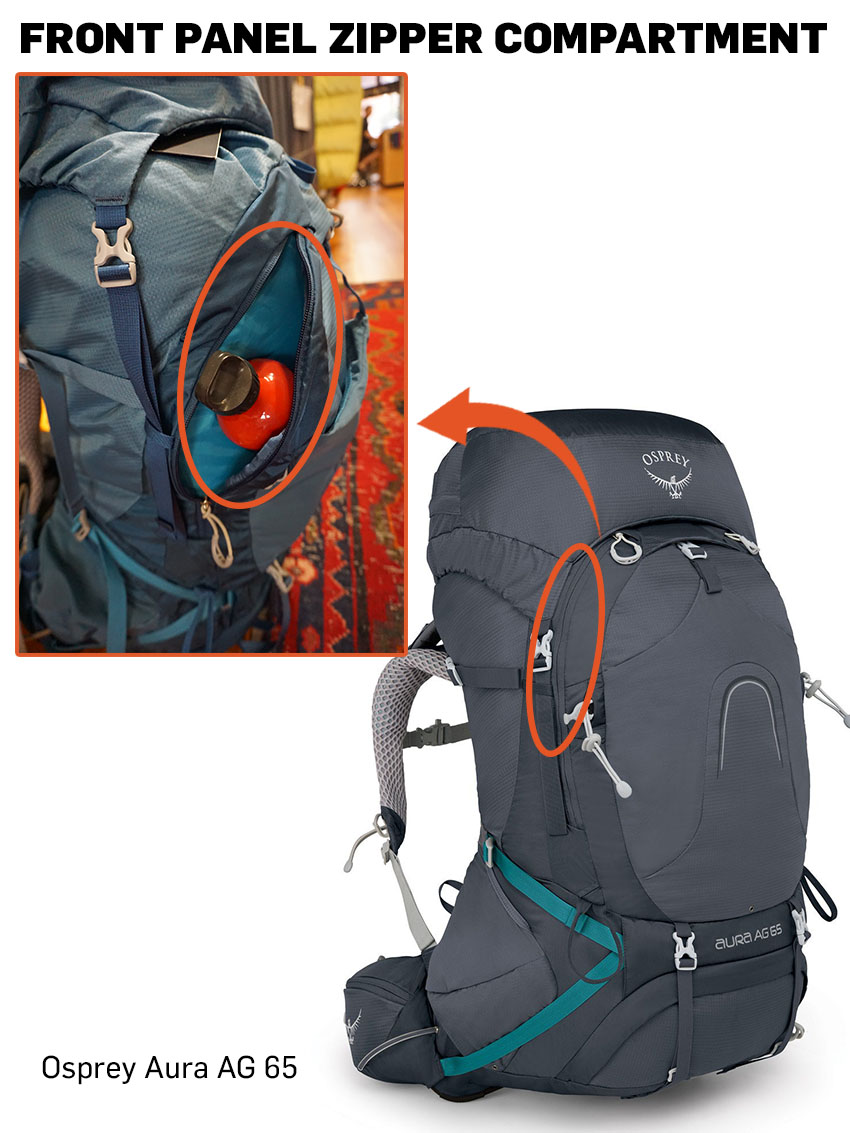 Front panel zipper for easy access to gear in the main compartment.
Front panel zipper for easy access to gear in the main compartment.
Many packs will have lashing points in a vertical row on both sides of the front. These lashing points are good for storing bulky items like a snowboard, snow shovel, or Crazy Creek camp chair. The bottom of the front panel typically has fabric or hard loops for carrying stored hiking poles, avalanche probe, or ice axe.
 Daisy chain vertical lashing points for carrying heavier external loads.
Daisy chain vertical lashing points for carrying heavier external loads.
 Bottom buckle loop straps are commonly used to secure a sleeping pad.
Bottom buckle loop straps are commonly used to secure a sleeping pad.
*BACKPACK SIDE PANELS*
Next, let’s address the sides of the pack. You’ll notice straps across the sides, which are used to compress the pack to keep your gear stable and reduce the pack volume as the space needed is reduced by food consumed. These straps are also used for lashing down long items that may sit in a side pocket, such as tent poles or a fishing rod kit.
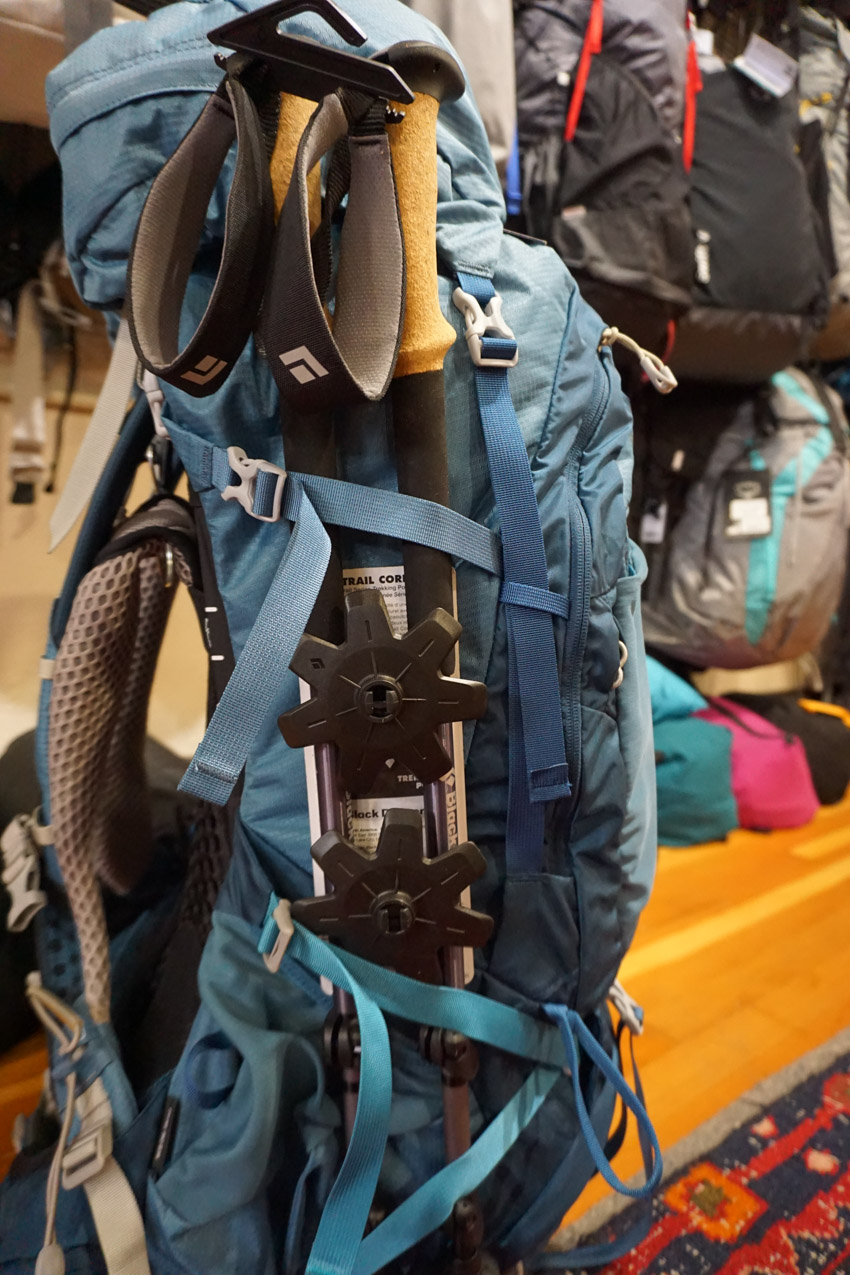 Upper and lower side compression straps stabilize loads on the Osprey Aura AG 65.
Upper and lower side compression straps stabilize loads on the Osprey Aura AG 65.
Closer to the bottom of each side are pockets intended for water bottles. You may or may not be able to reach them with the pack on your back. Some pockets are better designed than others to accommodate bottle removal and insertion. Be sure to check that aspect of packs you try. Typically hikers will use one pocket for water bottles and the other for quick gear access such as a hat, bandana, or gloves. Some packs will thoughtfully have a “holster” cutout in the pockets for easier access to the water bottle.
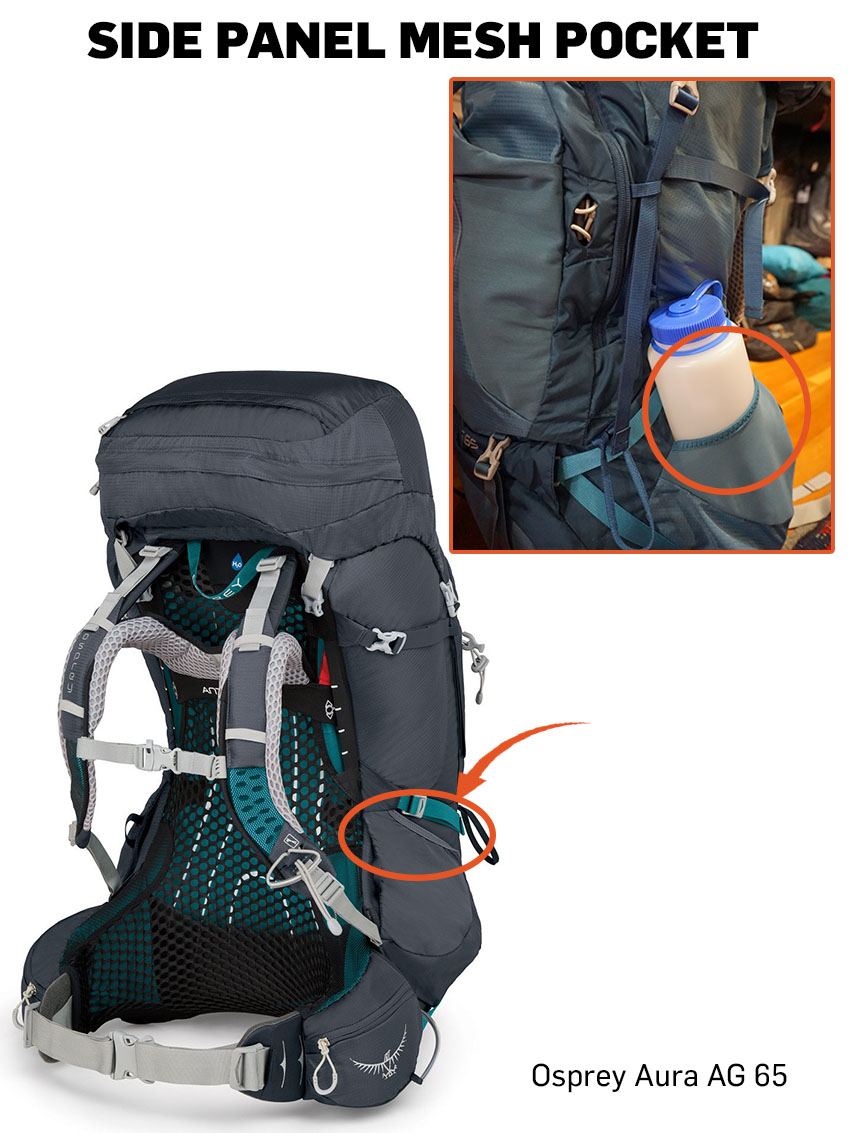 Side panel mesh pocket is often used for a hydration bottle filled with water or electrolyte drink.
Side panel mesh pocket is often used for a hydration bottle filled with water or electrolyte drink.
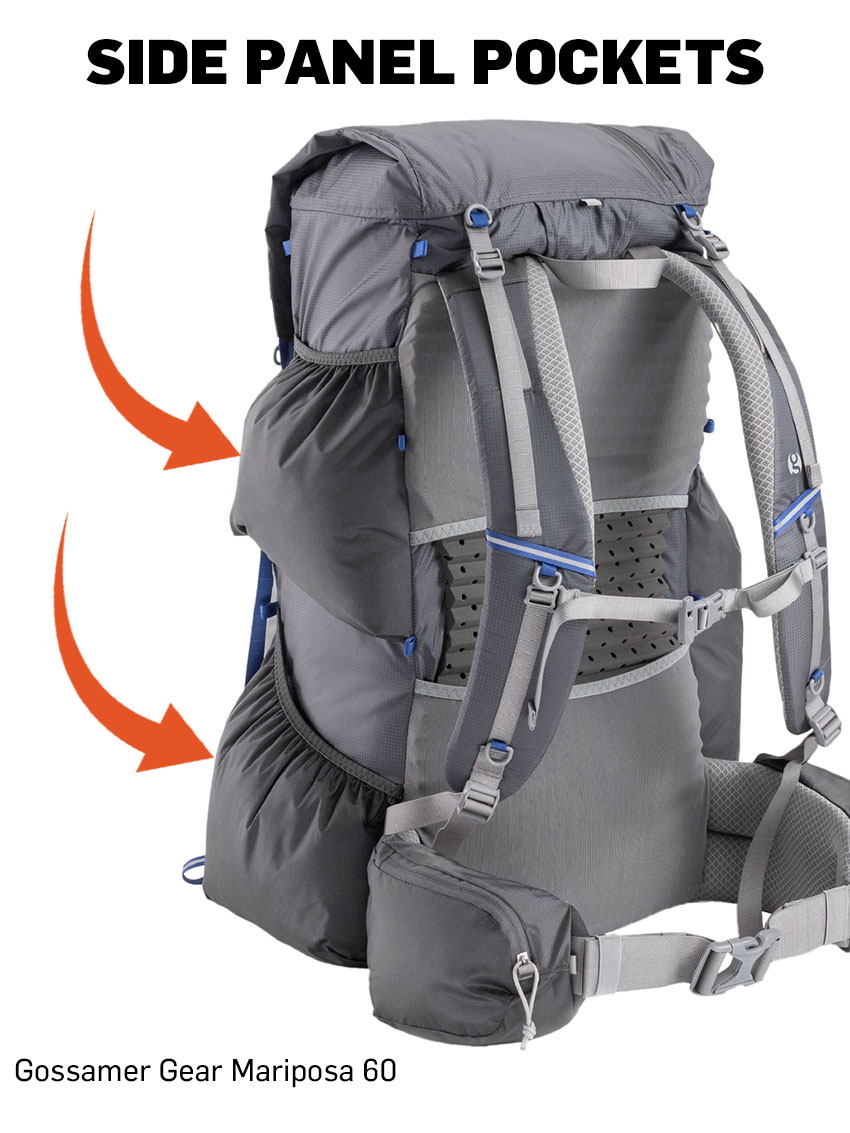 The Gossamer Gear Mariposa 60 L has two side pockets on one side and a large-deeper pocket on the other.
The Gossamer Gear Mariposa 60 L has two side pockets on one side and a large-deeper pocket on the other.
A fairly new wrinkle in pack features is the advent of a trash pocket – a piece of stretch fabric on the bottom of the pack into which you can stuff your Cliff Bar or Snickers wrappers. As the bottom of a pack gets dirty and wet, it’s a great location for storage while on the trail. But do remember to remove the food trash before you set-up camp, lest you attract some uninvited guests for dinner, like a chipmunk, squirrel, marmot, raccoon, or even a bear.
*BACKPACK BACK PANEL*
As we address the back of the pack with its shoulder straps and hip belt, let us look at the small straps between hip belt and pack body, and similar straps from the top of the shoulder straps to the top of the back side. The lower set of straps (“load stabilizer strap”) helps stabilize the load from swaying side to side on your back. Loosen these straps before putting on the pack. Tighten them down after you have buckled the hip belt and tightened the shoulder straps.
The upper straps (“load lifter strap”) let you adjust how close the weight is to your back for stabilization, or to move the pack body away from your torso for air circulation. On a properly fitted pack, the load lifter straps should be within a 30-60 degree angle from the horizontal. The straps become much less effective below a 30 degree angle. Pulling the load lifters moves the back closer to your shoulders, which is helpful on those long uphill slogs and rock hopping a boulder field. On flat ground or down hill, you can loosen the straps a bit to allow for better air circulation on your back.
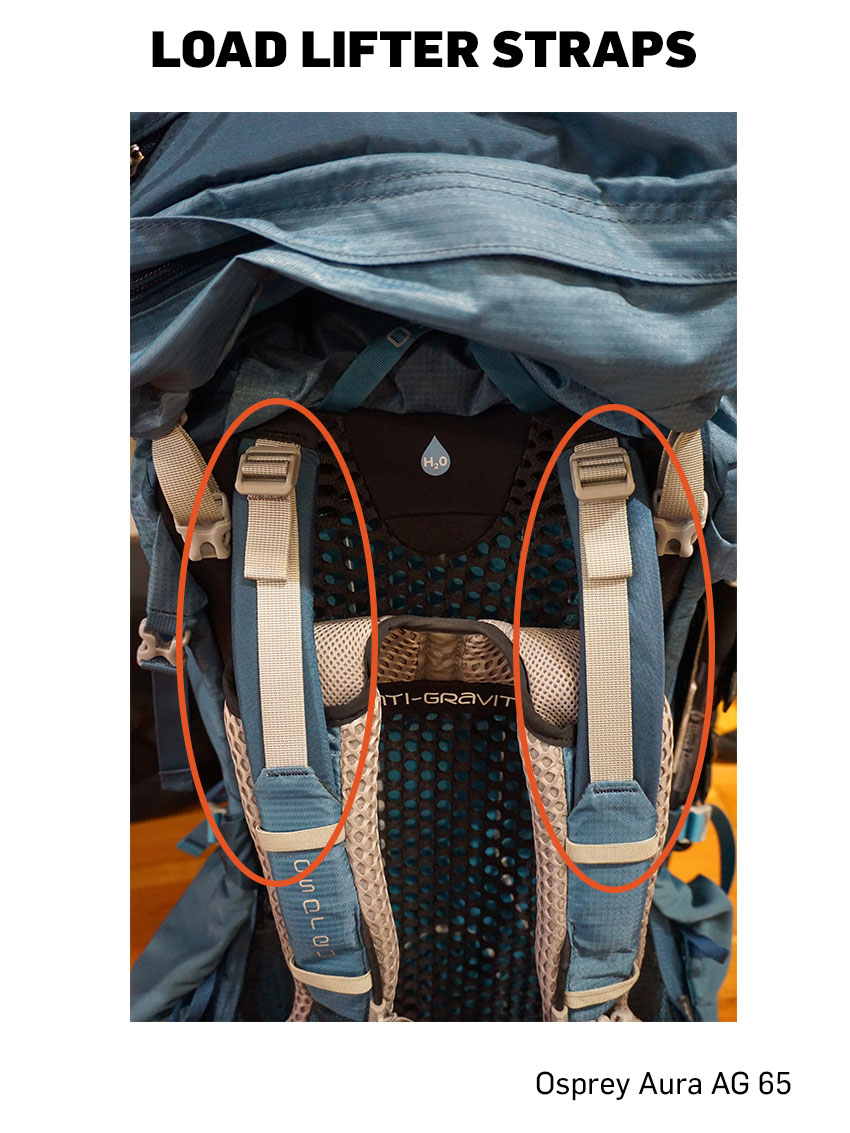 Like me, you’ll play with the load lifter straps often if the hiking trail undulates.
Like me, you’ll play with the load lifter straps often if the hiking trail undulates.
Now let’s look at the back panel, the part laying against your back. Here you will find a variety of designs – some oriented towards comfort/air flow, some more towards stiffness and weight capacity. Packs meant to haul heavier loads (40-50 pounds) have some type of frame (aluminum rods are the most common) aligned next to a plastic composite frame sheet or dense foam frame sheet for lighter packs. The stiffness of this design makes it capable of hauling heavier loads without the frame collapsing under the weight. This enables the pack to ride flat against your back and prevents gear from poking you in the back.
The pack area touching your back may use molded foam with a mesh covering, foam blocks with mesh covering, or 3D mesh. All work well for the purpose, but you may find some more comfortable than others, especially in hot weather.
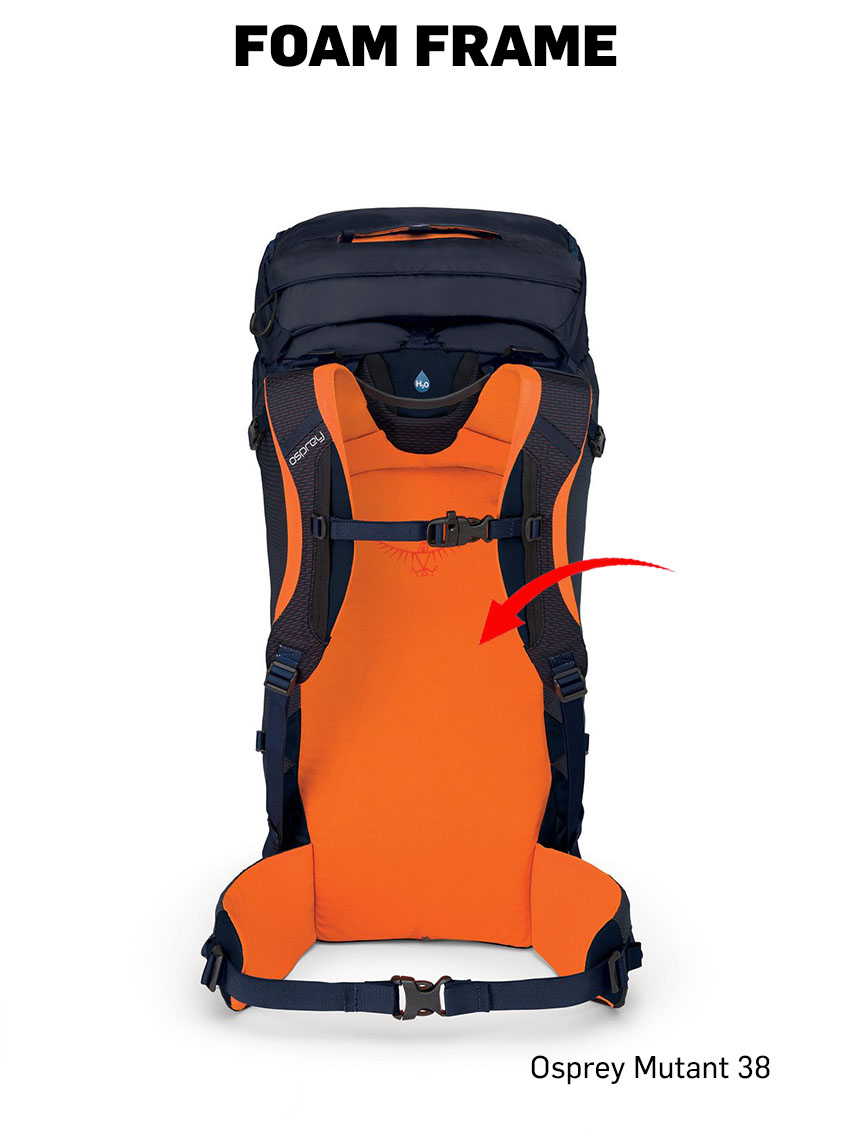 Osprey Mutant Backpack showing the Snowshed fabric back panel, which is minimalist, light, and comfortable on the mountain.
Osprey Mutant Backpack showing the Snowshed fabric back panel, which is minimalist, light, and comfortable on the mountain.
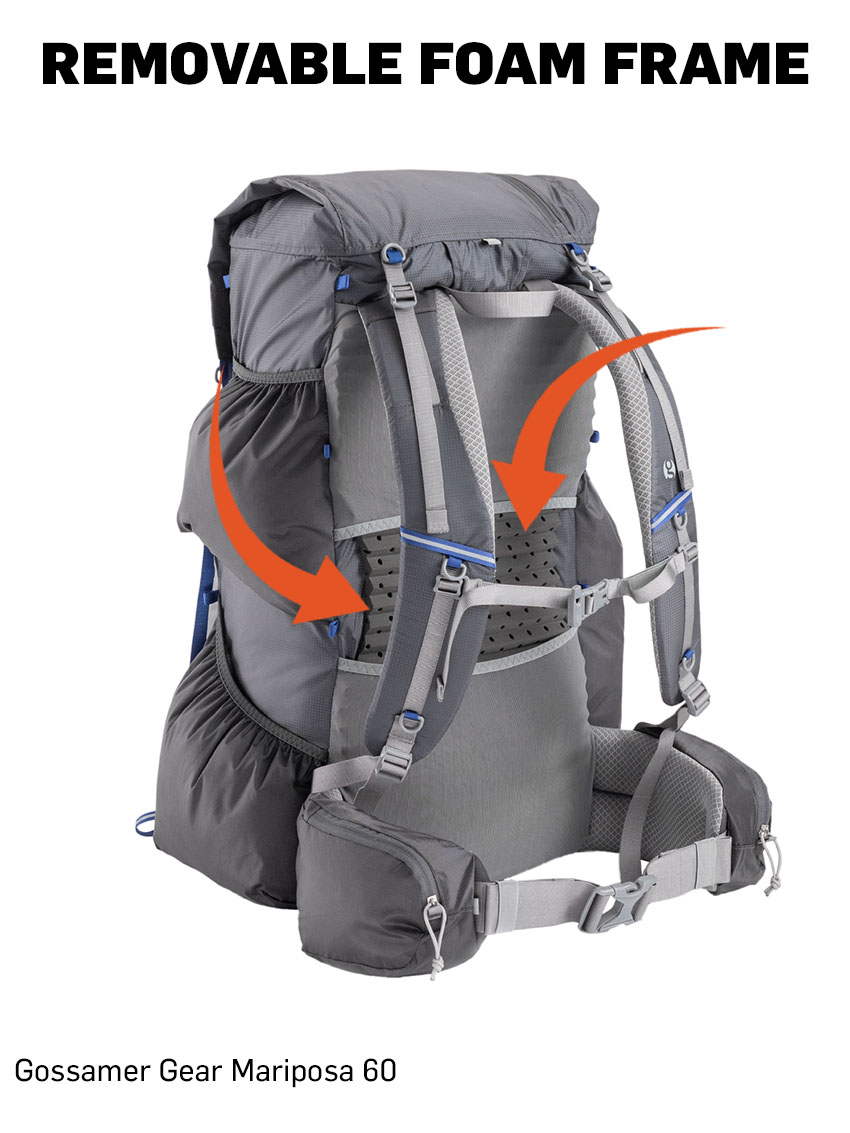 Gossamer Gear Mariposa 60 showing removable sit pad. The ventilated pattern creates air flow. Interchangeable pads available.
Gossamer Gear Mariposa 60 showing removable sit pad. The ventilated pattern creates air flow. Interchangeable pads available.
The trampoline-style mesh panel is more recent design for comfort that has proven popular. This tensioned panel keeps the loaded pack body an inch or two off your back, allowing more air circulation and less heat/sweat (Osprey Atmos/Aura, Gregory Zulu/Jade). While the design sounds good, it also moves the pack weight away from your torso, making the hiker feel the weight pulling backwards depending on the fit of the back. This is where load lifter straps can really help move the weight closer to you when needed. When looking at new packs, be sure to test this feature to see if it works for you. As said before, pack fit means everything when it comes to hiker comfort.
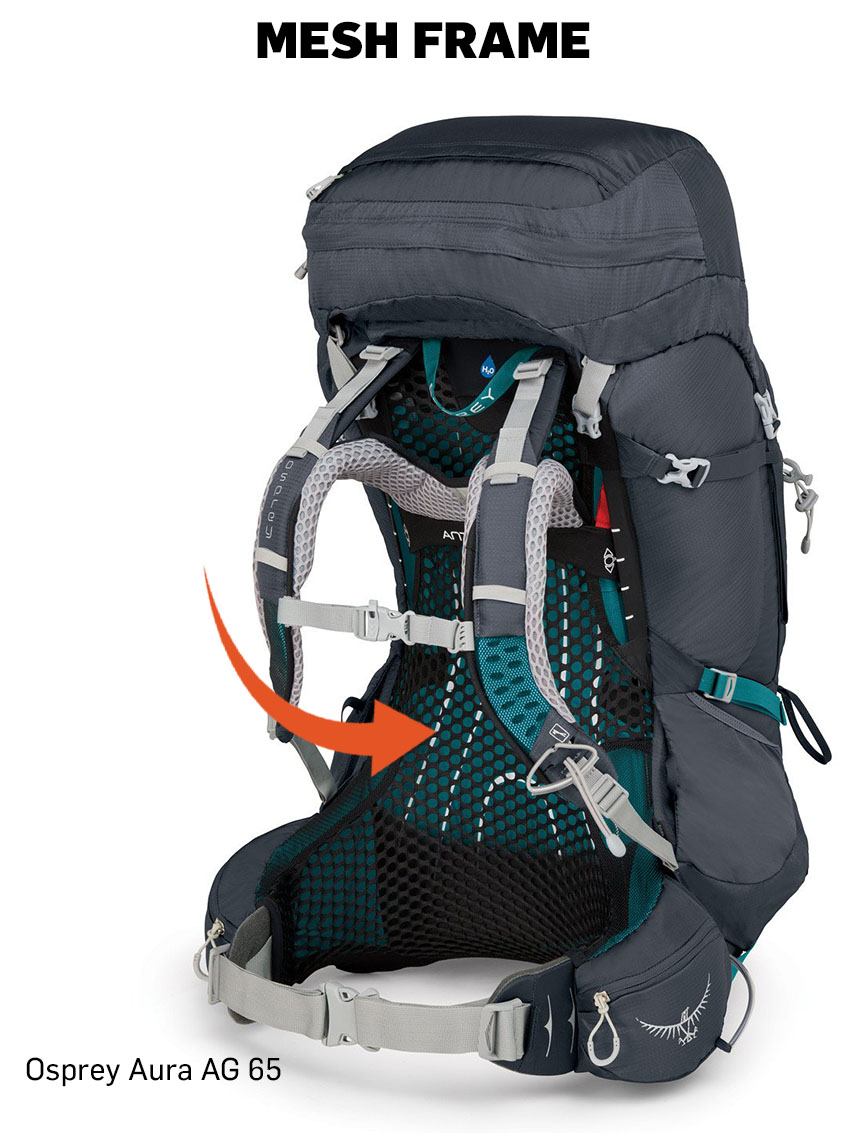 The Aura backpack has a 3D mesh back panel that Osprey calls their “Anti-Gravity” suspension mesh.
The Aura backpack has a 3D mesh back panel that Osprey calls their “Anti-Gravity” suspension mesh.
*SHOULDER STRAPS*
The fit of a pack is controlled mostly by the fit of the shoulder straps and hip belt. Pack makers address torso length fit by using several methods. The shoulder straps are attached to a height adjustable harness that can move over a range of several inches. Most pack makers offer a variety of sizes from XS to XL with adjustable shoulder harness height to get a truly custom fit. Packs that have sewn-on shoulder straps without height adjustment need to fit properly right out of the box. If the pack doesn’t fit well, don’t buy it – regardless of what color it is!
Shoulder strap padding varies quite a bit. Packs intended for heavier loads generally have thicker padding. Packs intended for light loads will have lighter, thinner padding. When you try the pack on your back with a light load (10-15 pounds), note how the shoulder strap feels not only on your shoulders, but also where the strap comes lower down across your ribs to the bottom of the pack. Some shoulder strap pads taper off into the webbing for comfort. Some designs end the padding with a little taper and you can feel that bulk on your body. Note how all those little things can quickly add up to comfort or misery! Take your time to do it right the first time.
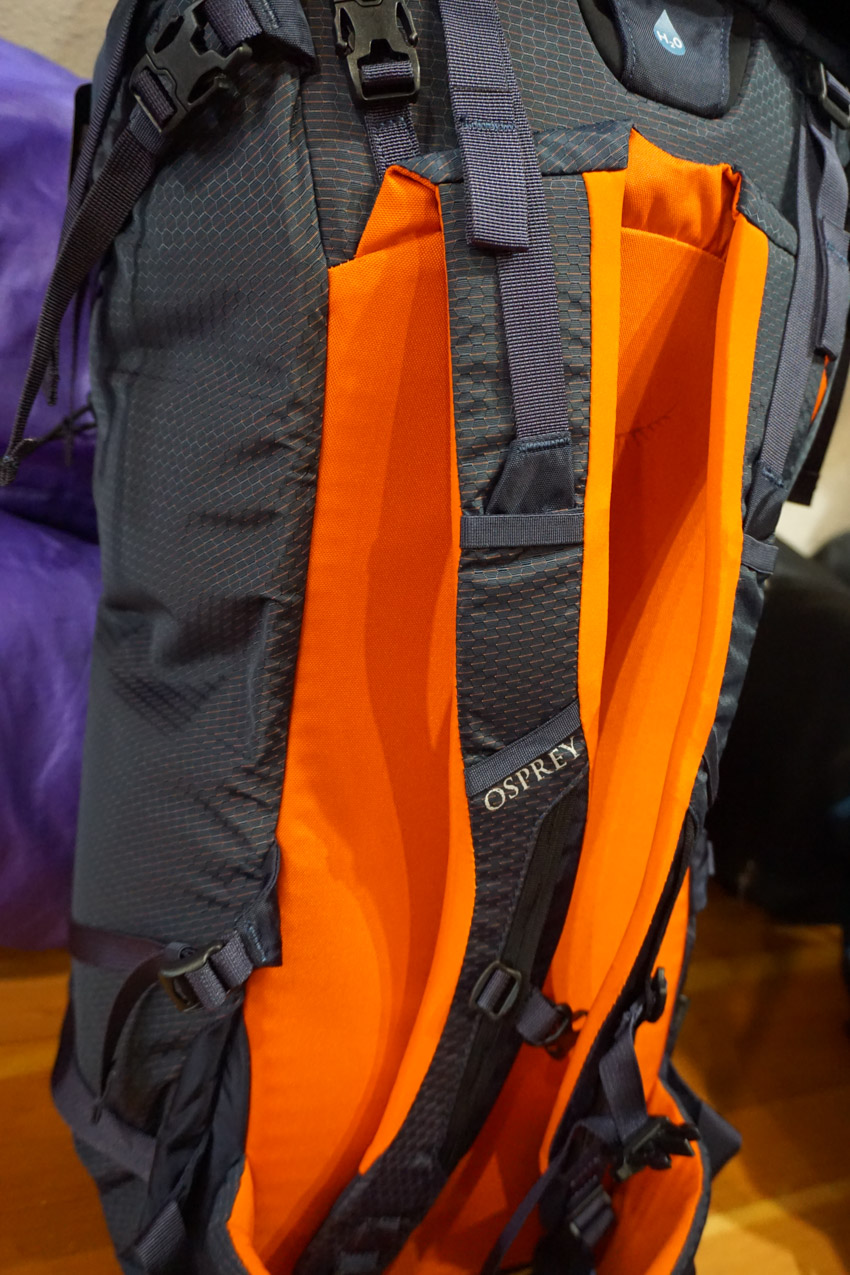 Thinner shoulder strap padding on the Mutant 38 Osprey Backpacking Backpack ~2.7 lb
Thinner shoulder strap padding on the Mutant 38 Osprey Backpacking Backpack ~2.7 lb
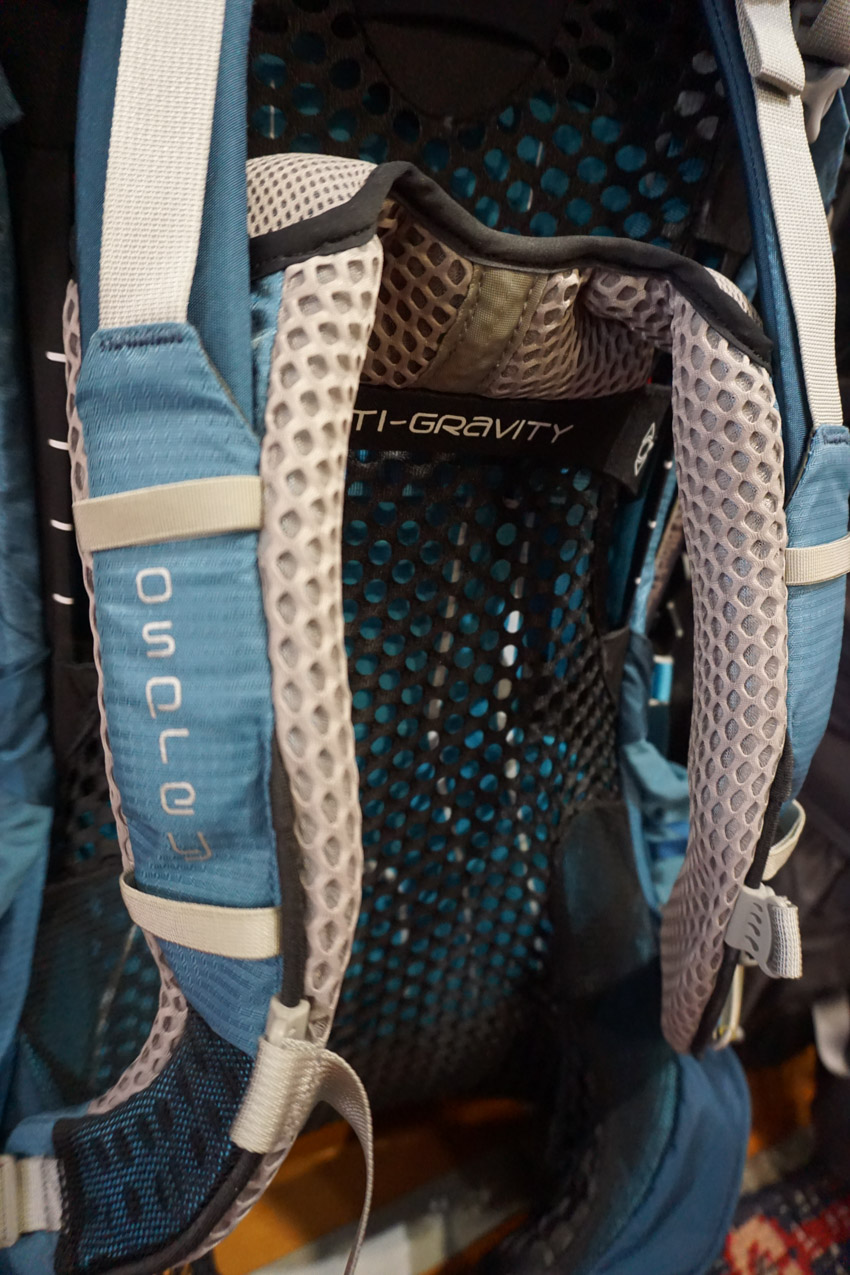 Thicker shoulder strap padding on the Aura AG 65 Osprey Backpacking Backpack ~4.35 lb
Thicker shoulder strap padding on the Aura AG 65 Osprey Backpacking Backpack ~4.35 lb
Most pack makers put a webbing strap or two horizontally across each shoulder strap. This allows you to clip on a personal locator beacon (PLB), water bottle, bear spray, or shoulder pocket (I’m a huge fan – namely to keep the phone camera handy for those fleeting once-in-a-lifetime shots). Some lightweight packs may have stretch mesh pockets here meant for food bars, not phones. Unfortunately, few of the big time pack companies offer accessory shoulder pockets. However, several of the smaller pack companies do offer shoulder pockets that fit most any pack.
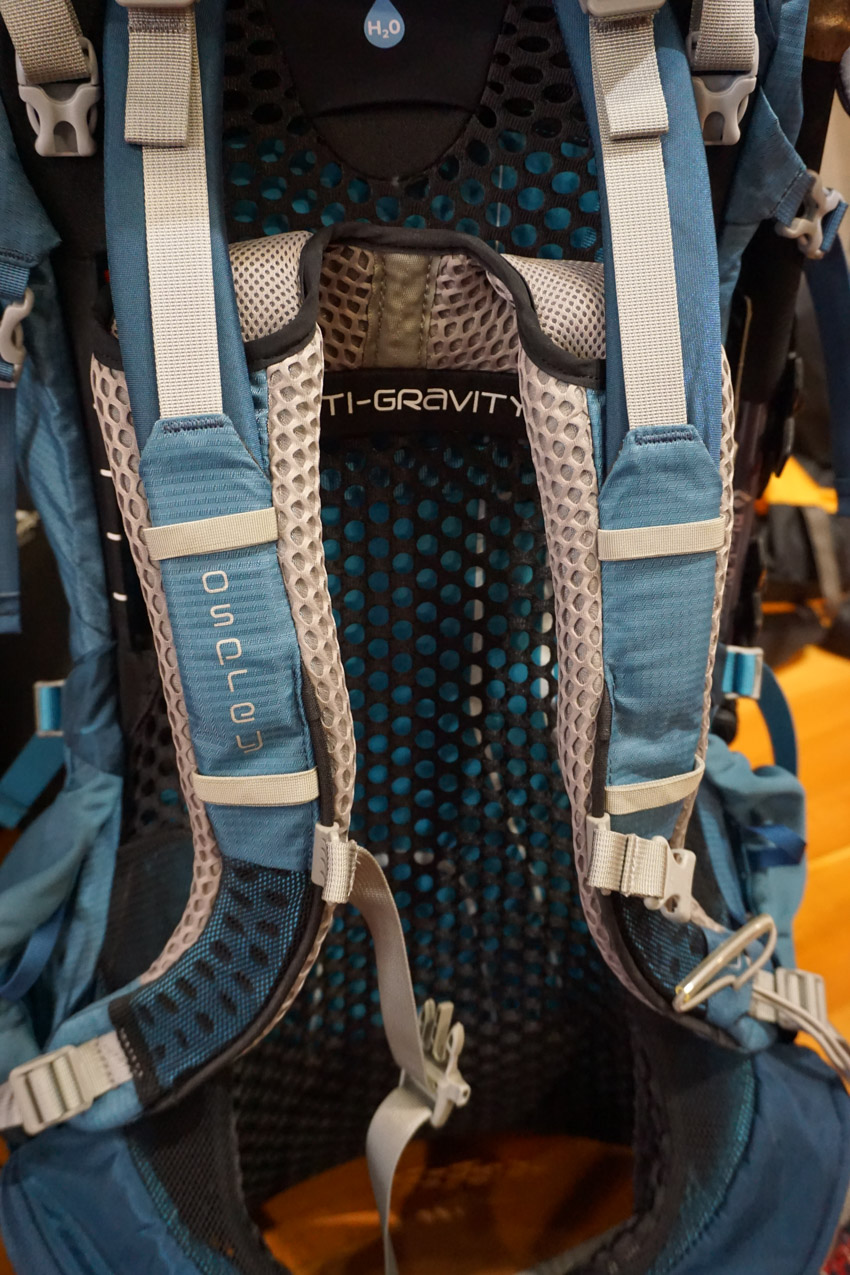 This Osprey backpack has two horizontal webbing straps on each shoulder strap.
This Osprey backpack has two horizontal webbing straps on each shoulder strap.
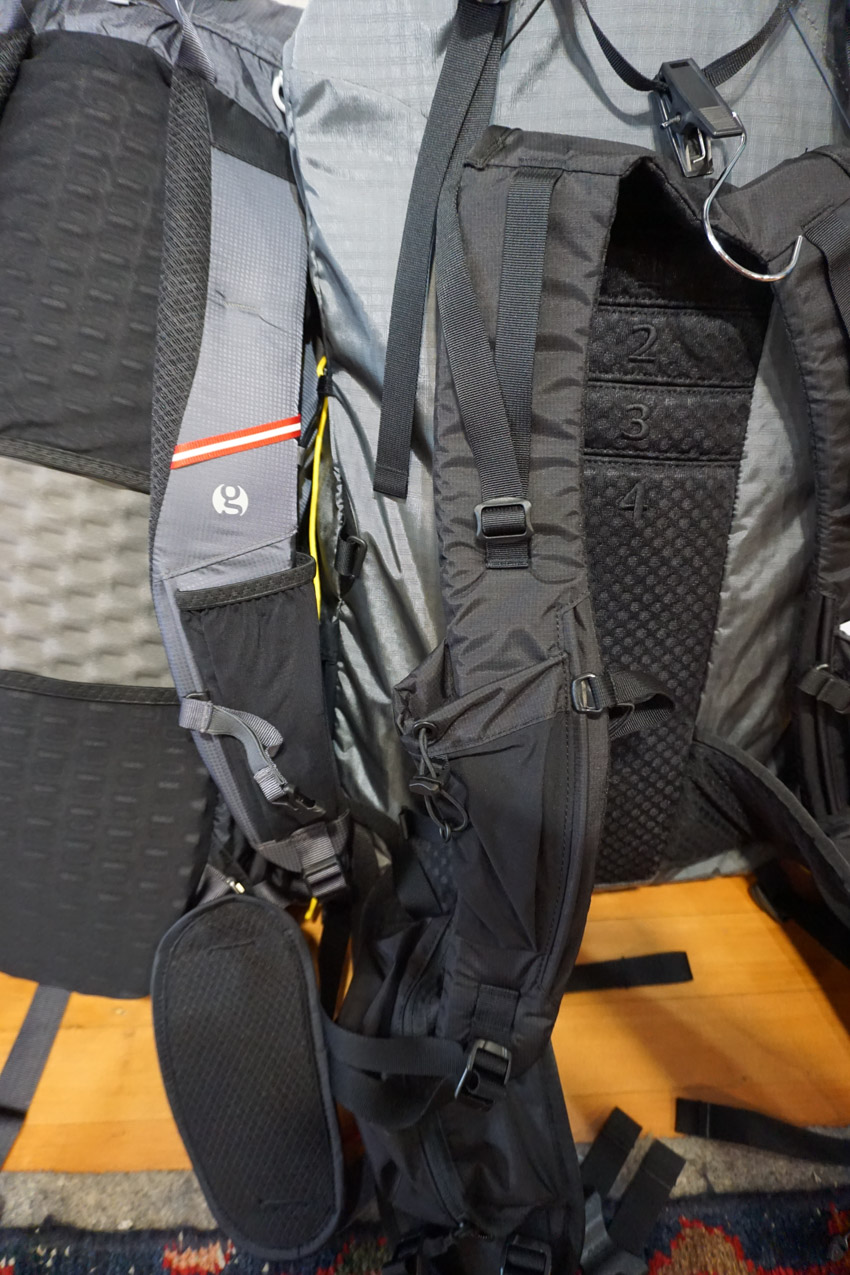 Kumo 36 Superlight Backpack on Left and Six Moon Designs Swift V on Right both have shoulder pockets.
Kumo 36 Superlight Backpack on Left and Six Moon Designs Swift V on Right both have shoulder pockets.
You will notice that basically all backpacks have a buckled webbing strap across the gap between the two shoulder straps. The “sternum strap” (often with molded emergency whistle) prevents the shoulder straps from slipping outwards on your shoulders. The sternum strap is intended to have little to no tension on it.
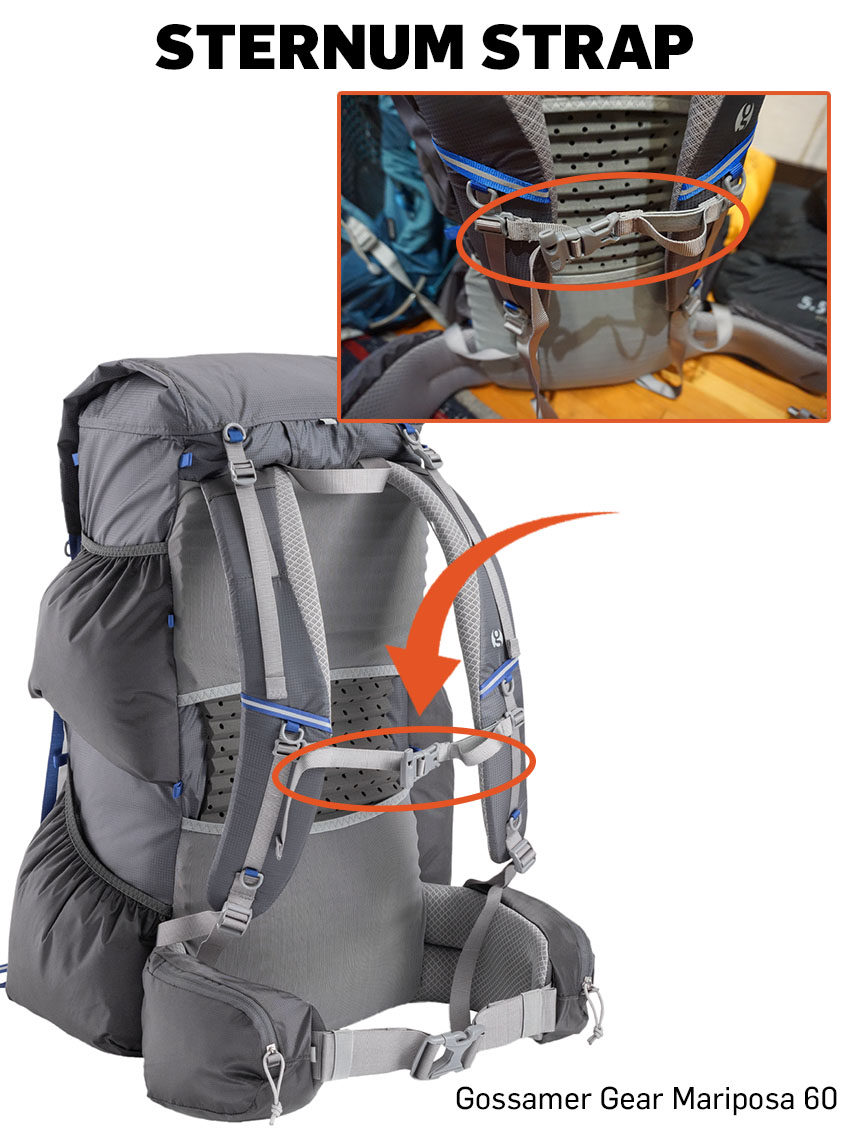 Sternum straps on almost all packs allow for an up or down adjustment for the perfect fit.
Sternum straps on almost all packs allow for an up or down adjustment for the perfect fit.
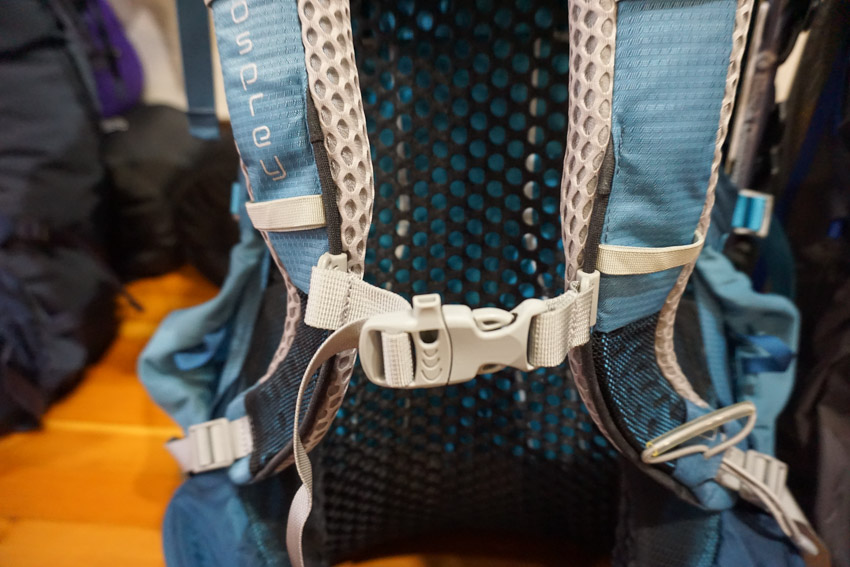 Osprey Aura 65 Backpacking Backpack with whistle sternum strap.
Osprey Aura 65 Backpacking Backpack with whistle sternum strap.
Though rare, some packs have modular pocket systems allowing you to add or remove pockets as needed to save weight or increase capacity (REI Co-op Flash 55 and Flash 45). Unfortunately, modular systems tend to be proprietary to that manufacturer.
*BACKPACK HIP BELT*
Traditional backpacks have a hip belt made of strong fabrics and dense foam shaped to fit the contours of most people. Packs intended to carry heavier loads will have beefier, stiffer hip belts with lumbar support padding. On a well designed pack, up to 80% of the load can be transferred via the hip belt to your hips. Most hikers find this setup more comfortable versus having a lot of weight on your shoulders. Some manufacturers make hip belts in sizes that can be swapped out for a better fit.
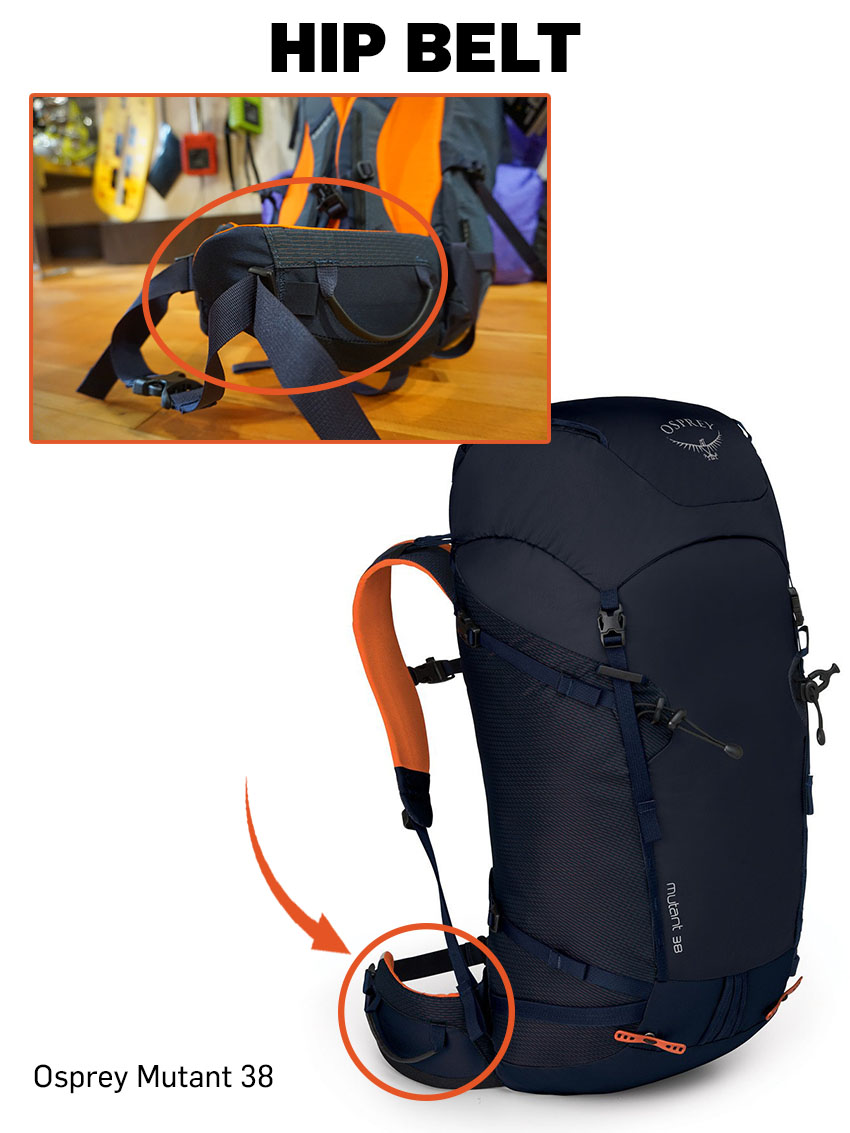 Hip belt with gear loop instead of a zippered pocket.
Hip belt with gear loop instead of a zippered pocket.
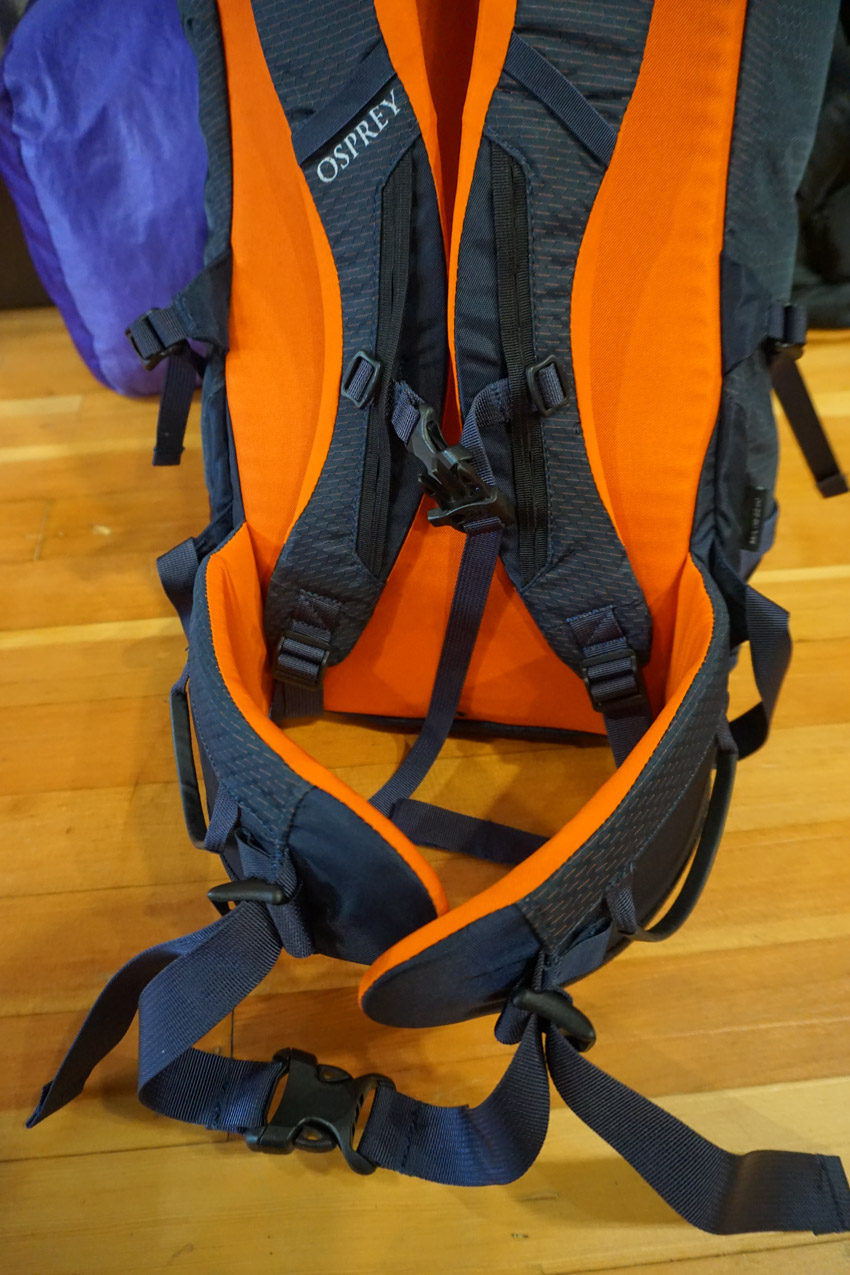 Hip belt with thinner padding to cut down on weight.
Hip belt with thinner padding to cut down on weight.
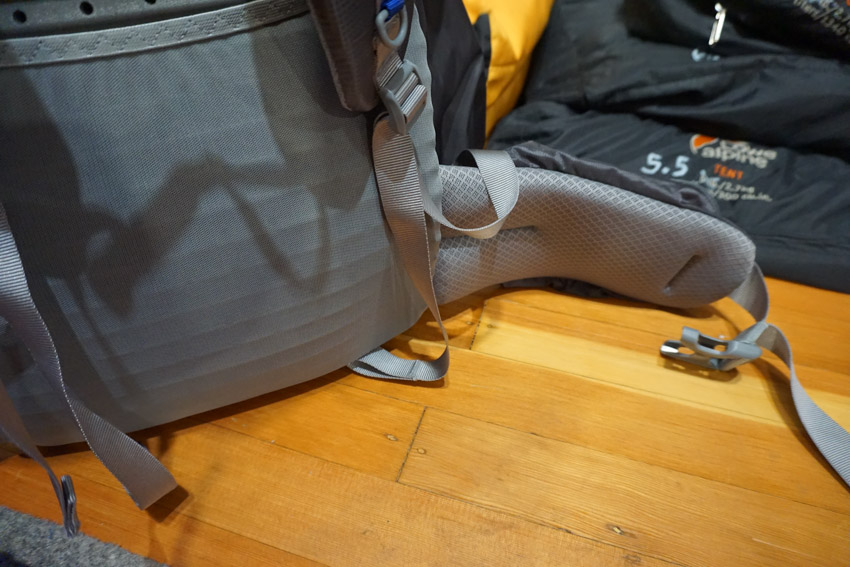 Mariposa 60 backpacking backpack hip belts are removable so customers can choose the size they need.
Mariposa 60 backpacking backpack hip belts are removable so customers can choose the size they need.
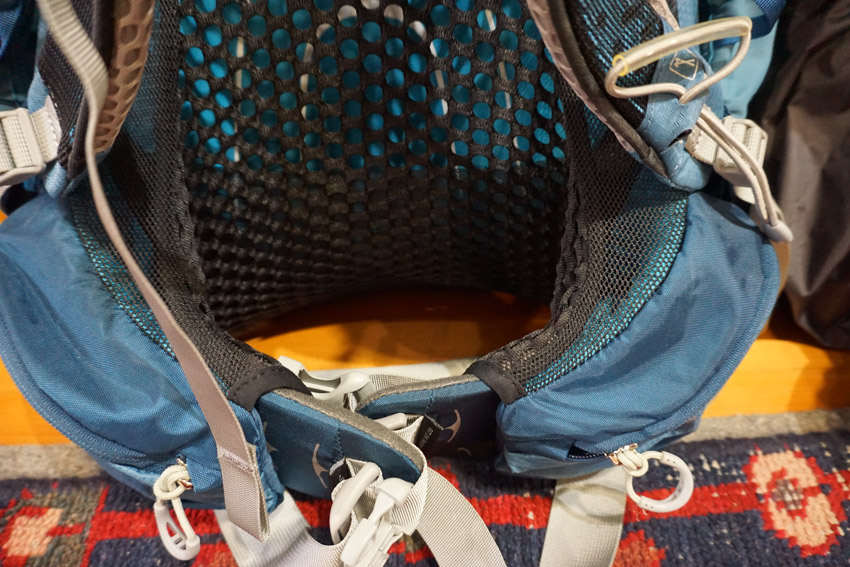 Osprey’s Anti-Gravity suspension features lightweight mesh on the hip belt to provide comfort and ventilation.
Osprey’s Anti-Gravity suspension features lightweight mesh on the hip belt to provide comfort and ventilation.
Hip belts have a few different strap buckle configurations, but all have a buckle beefy enough for the intended load. Most modern packs have hip belt pockets with zippered access. Some packs use waterproof material and water-proof zippers. Most packs use nylon fabric for the pockets, though some use less durable mesh. Newer pack designs have pockets sized to fit most larger phones. Older pocket designs were sized to fit small items like a Cliff Bar, lip balm, and sunscreen. Well-designed pocket zippers can be easily operated with one hand. Pockets not as well designed may need one hand to hold the pocket steady while the other hand unzips/zips it. Check this feature when trying on new packs, as it is one of those features that can drive a hiker nuts while on the trail! Personally, I love shoulder strap pockets, but I’m totally addicted to hip belt pockets and don’t see the need for a pack without them!
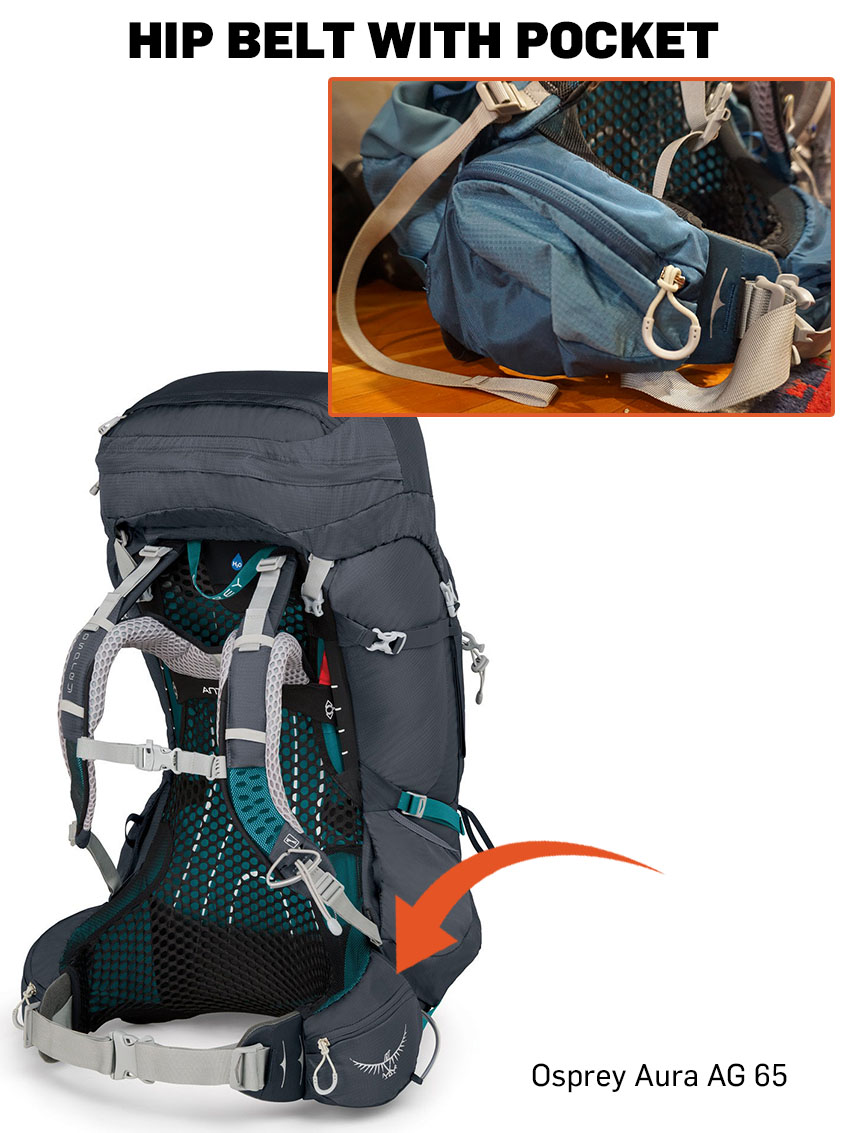 Osprey backpacking backpack with dual hip belt pockets.
Osprey backpacking backpack with dual hip belt pockets.
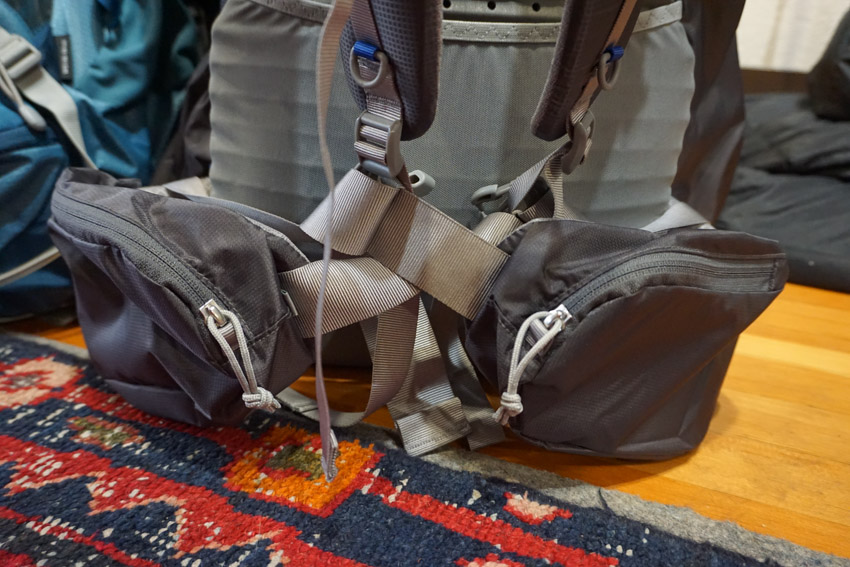 Mariposa 60 Liter backpack with two very large hip belt pockets for accessibility to keep your pace without stopping.
Mariposa 60 Liter backpack with two very large hip belt pockets for accessibility to keep your pace without stopping.
Click on the packs below. Identify the backpacking backpack features. Instantly realize your IQ has just gone up.
Granite Gear Crown2 60 Pack – Men’s
REI size and color availability good ($199.95)
Granite Gear Crown2 60 Pack – Women’s
REI size and color availability good ($199.95)
Osprey Rook 65 Pack – Men’s
Official Osprey site ($165.00)
Osprey Renn 65 Pack – Women’s
Official Osprey site ($165.00)
REI Co-op Trailbreak 60 Pack – Men’s
REI availability good ($149.00)
REI Co-op Trailbreak 60 Pack – Women’s
REI availability good ($149.00)
Now that you know the features common to the vast majority of backpacks, you can confidently go to the store to try on new packs and get a great fit with the features you want!
